On to Panamá. They don’t call it “Panamá City” anymore. Now it is simply “Panamá.” Most folks just call it “the city.” We crossed the canal and checked the GPS on the phone to find the best way to our hotel.
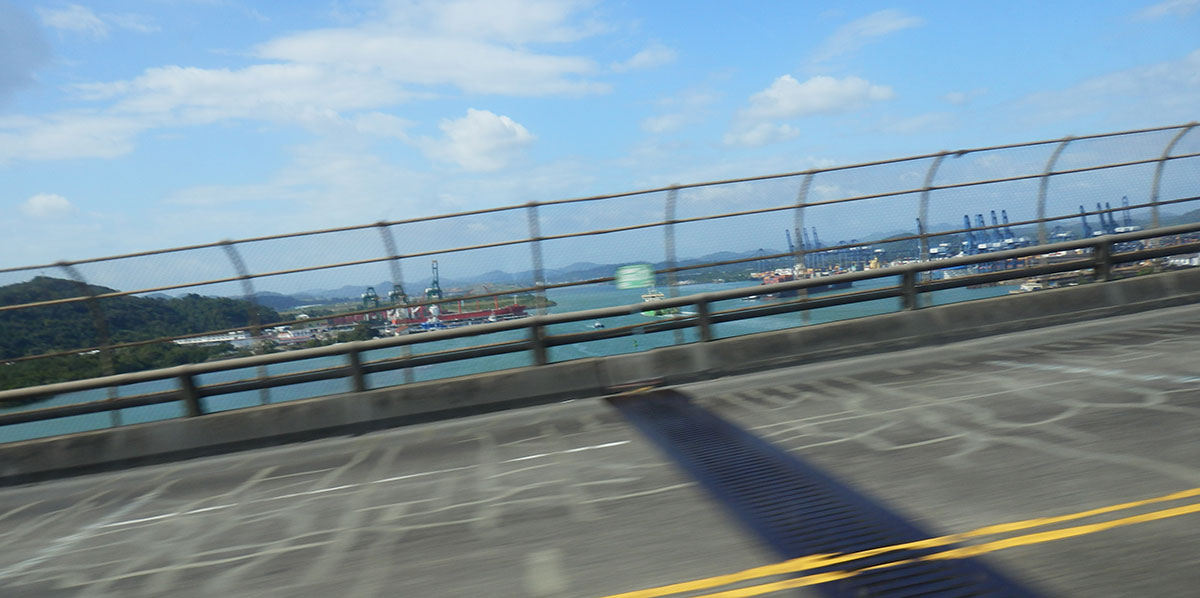
Our hotel sported a rooftop pool on the 18th floor with a panoramic view – of the surrounding, taller skyscrapers (Note: you may want to zoom in.) The city was built on a low, muddy harbor ringed by mangroves. There’s not really a beach. At low tide, there’s half a mile of mud between the shore and the water. Despite this, property with a view of the water has become very valuable. The city hosts some of the tallest buildings in the world and has been called the Dubai of the Americas.
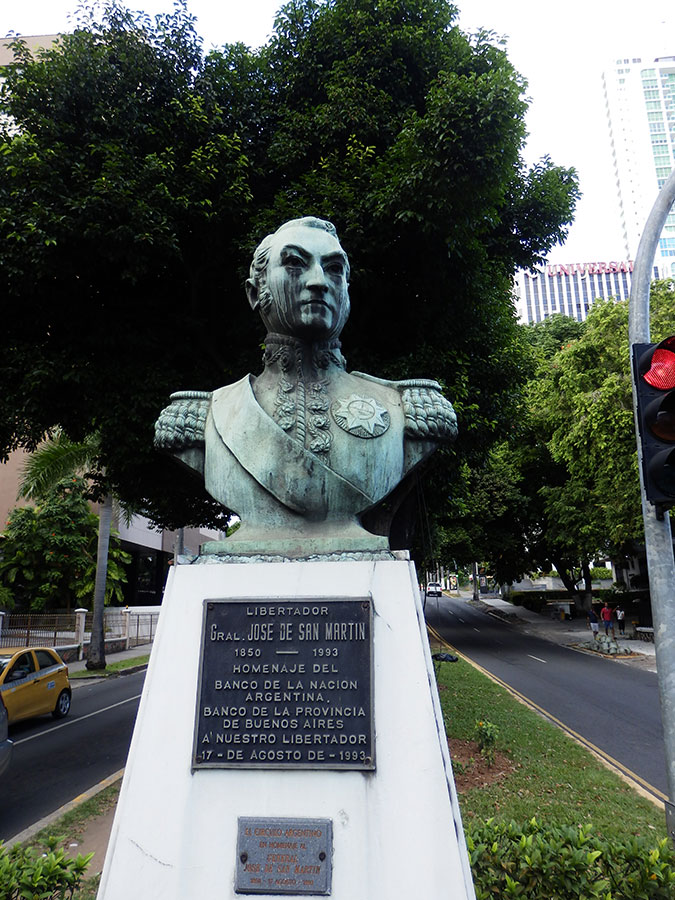 We left the car at the hotel and walked around the neighborhood, only to find the area all buttoned up on New Year’s Eve. We trekked for blocks and blocks, finally admitting defeat and returning to the hotel for food. We ran into a local picking up his To Go order who raved about the hotel’s kitchen. We had an excellent meal of tapas – shrimp, ham croquettes, bread, beer, wine.
We left the car at the hotel and walked around the neighborhood, only to find the area all buttoned up on New Year’s Eve. We trekked for blocks and blocks, finally admitting defeat and returning to the hotel for food. We ran into a local picking up his To Go order who raved about the hotel’s kitchen. We had an excellent meal of tapas – shrimp, ham croquettes, bread, beer, wine.
After a siesta, we sought a ride across town. Cabs are everywhere in Panamá. Most locals don’t have their own vehicles, so the cabs are necessary. The city has the only subway in Central America, but we never got around to riding it because the cabs were so cheap.
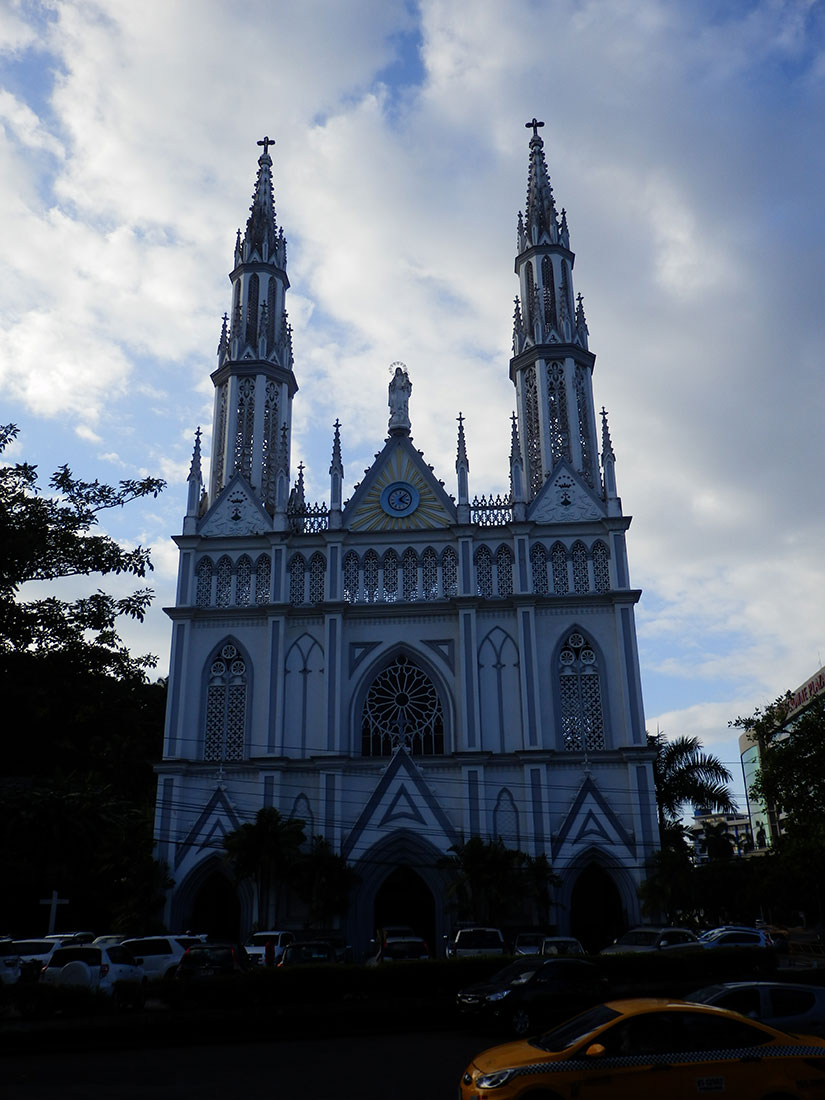
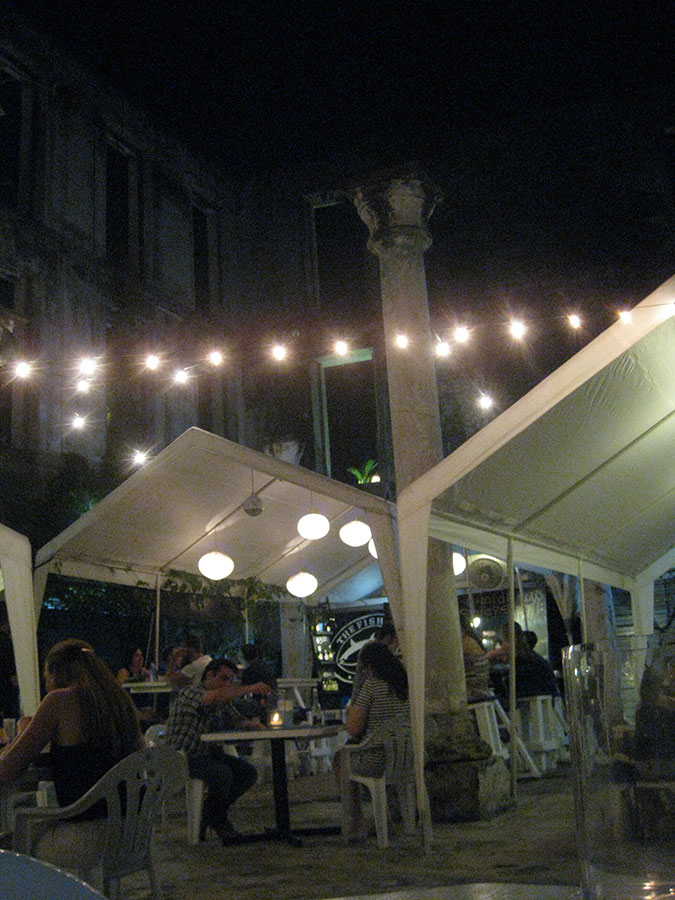 We were dropped us off in Casco Viejo, a historic neighborhood we’ll detail shortly. We stepped out into a charming square with a cathedral, sidewalk cafés, sculptures and the like. We’d read that the neighborhood can be dangerous, but things seemed well lit and bustling, at least in the heart of the district. We set off in search of a proper meal, knowing everywhere would be slammed on New Year’s Eve. Eventually, we landed at a sort of pop-up restaurant in the shell of a former Spanish Colonial building, now turned into a courtyard. We split a piece of absolutely amazing fish and had a round of drinks before charging back out into the neighborhood. Though we’d read that the place to be for New Years was one of the swanky, rooftop clubs downtown, we found the bars of Casco Viejo packed to capacity.
We were dropped us off in Casco Viejo, a historic neighborhood we’ll detail shortly. We stepped out into a charming square with a cathedral, sidewalk cafés, sculptures and the like. We’d read that the neighborhood can be dangerous, but things seemed well lit and bustling, at least in the heart of the district. We set off in search of a proper meal, knowing everywhere would be slammed on New Year’s Eve. Eventually, we landed at a sort of pop-up restaurant in the shell of a former Spanish Colonial building, now turned into a courtyard. We split a piece of absolutely amazing fish and had a round of drinks before charging back out into the neighborhood. Though we’d read that the place to be for New Years was one of the swanky, rooftop clubs downtown, we found the bars of Casco Viejo packed to capacity.
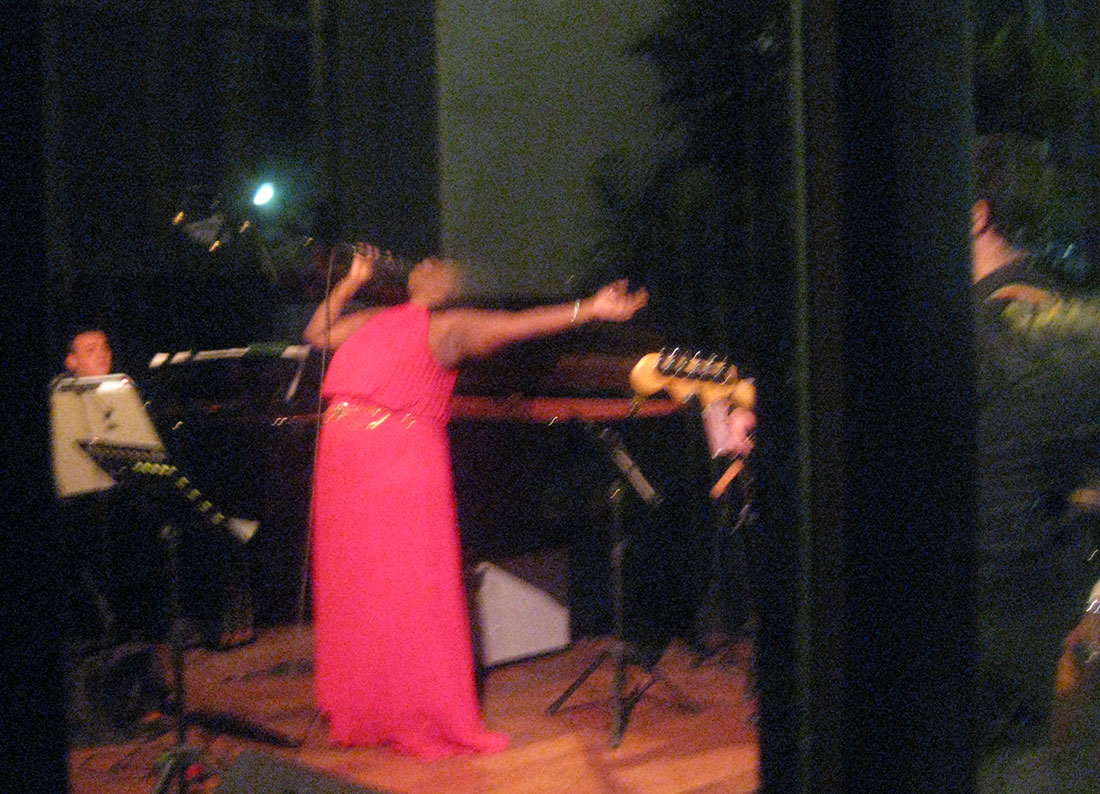
Eventually, we managed to grab a couple of drinks at a random British-style pub and made our way down to the park that runs almost the entire length of the waterfront. It offered a good view of fireworks downtown, and I guessed the poorer residents of the surrounding neighborhoods would be blowing off steam with some impressive explosives. A few firecrackers and larger, prettier things were already going off. As the crowd gathered around us, the displays grew and grew.
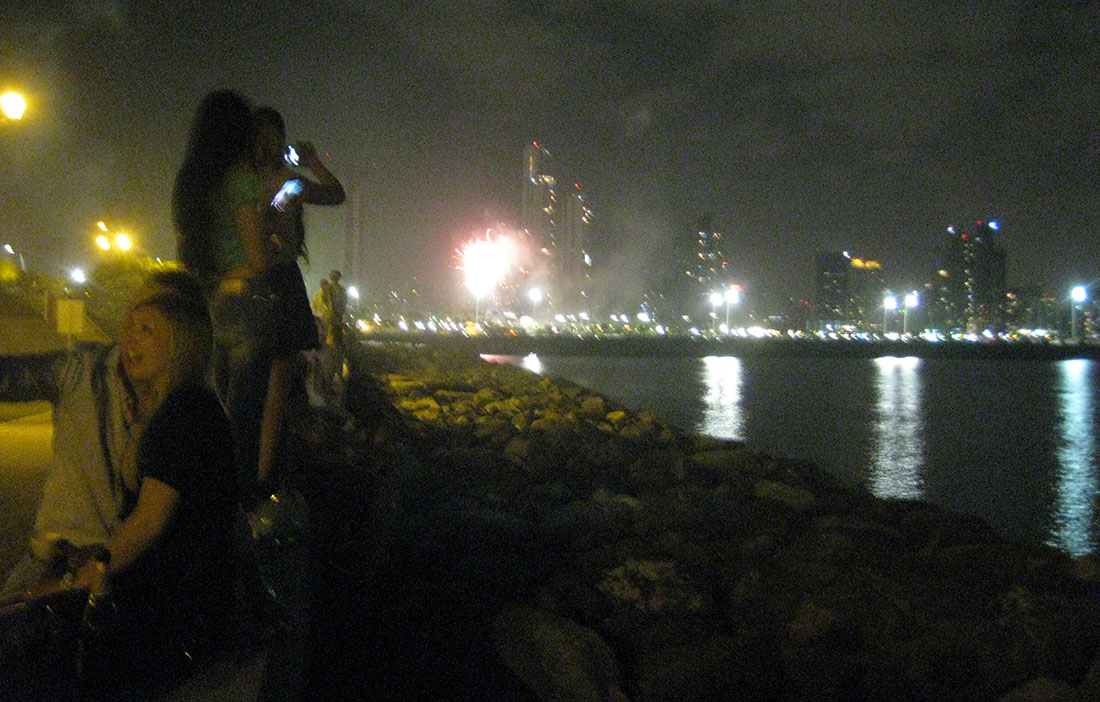
Pretty soon I was saying, “Wow!” almost non-stop. A block away, someone had started a fire in a barrel and was chucking buckets full of firecrackers into it. Downtown, big, professional-grade stuff exploded in the sky, reflected by the water and skyscrapers. Just when I thought things couldn’t get any bigger, someone set off one of those computer-controlled displays less than 100 yards from us, firing mortar after mortar into the air right over our heads. I’m rarely impressed by fireworks displays but Panamá blows up real good!
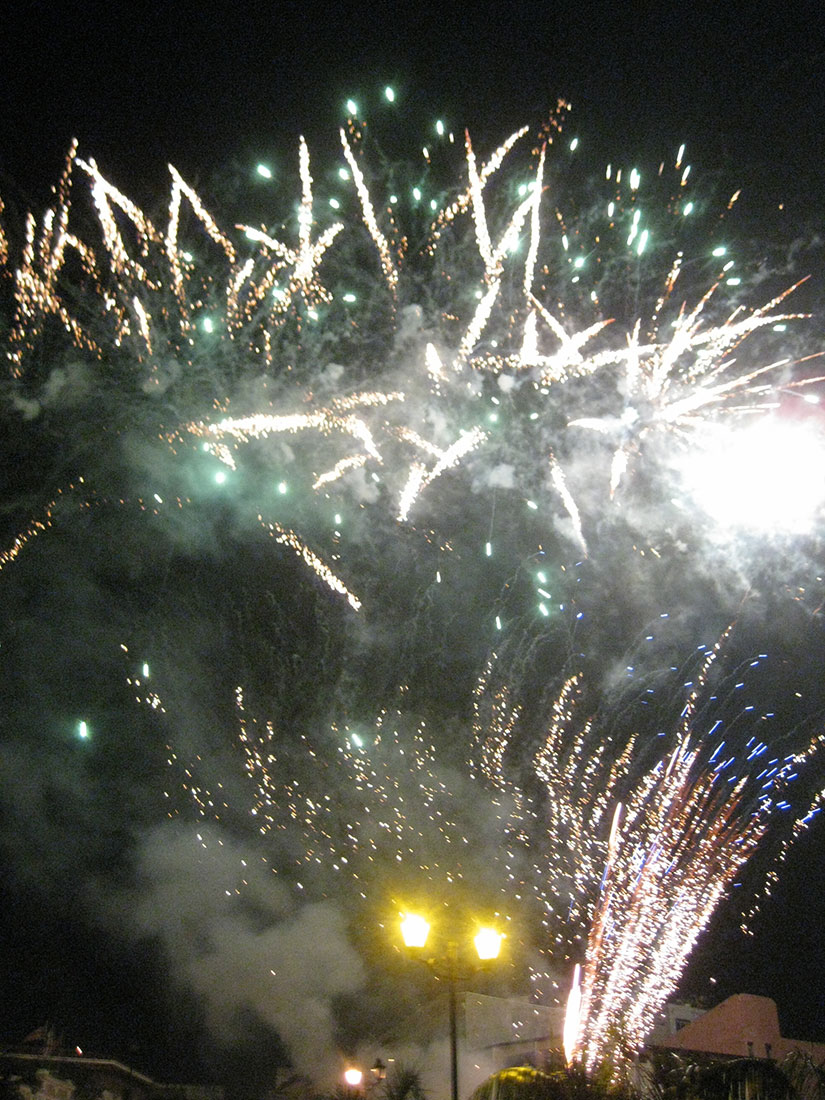
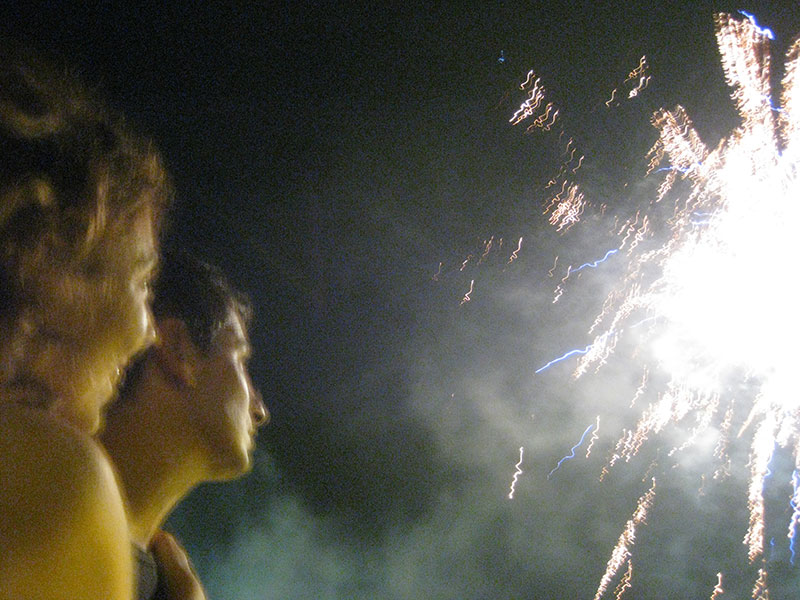
After a good hour or more of continuous bombardment, things gradually began to die down. We caught a cab back to the hotel, ignoring their rooftop party with the $50 cover charge, and fell into bed. The explosions outside continued until after dawn. The scene reminded us of the Frontline documentary about the 1989 invasion of Panamá we watched on our laptop during a siesta, though without quite as many civilian casualties.
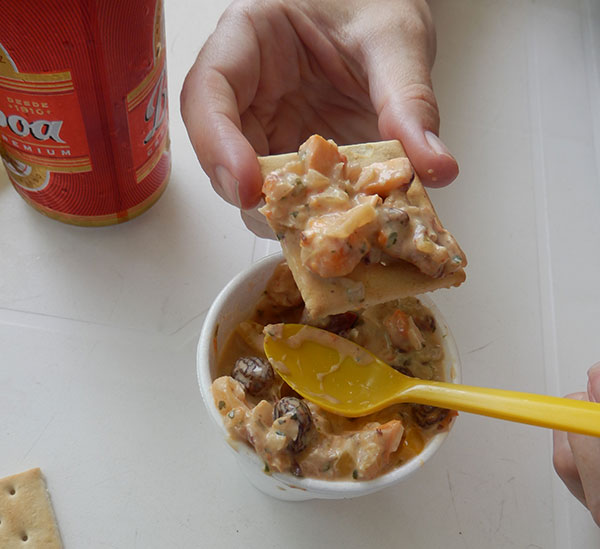 The fish market is the place to eat in Panamá, according to everyone from locals to our guide book to Anthony Bordain. It sits on the water’s edge, just below Casco Viejo, and houses dozens of vendors selling fresh-off-the-boat fish. Outside, and in the balcony overlooking the fish market, are restaurants serving amazing ceviche at unbelievable prices.
The fish market is the place to eat in Panamá, according to everyone from locals to our guide book to Anthony Bordain. It sits on the water’s edge, just below Casco Viejo, and houses dozens of vendors selling fresh-off-the-boat fish. Outside, and in the balcony overlooking the fish market, are restaurants serving amazing ceviche at unbelievable prices.
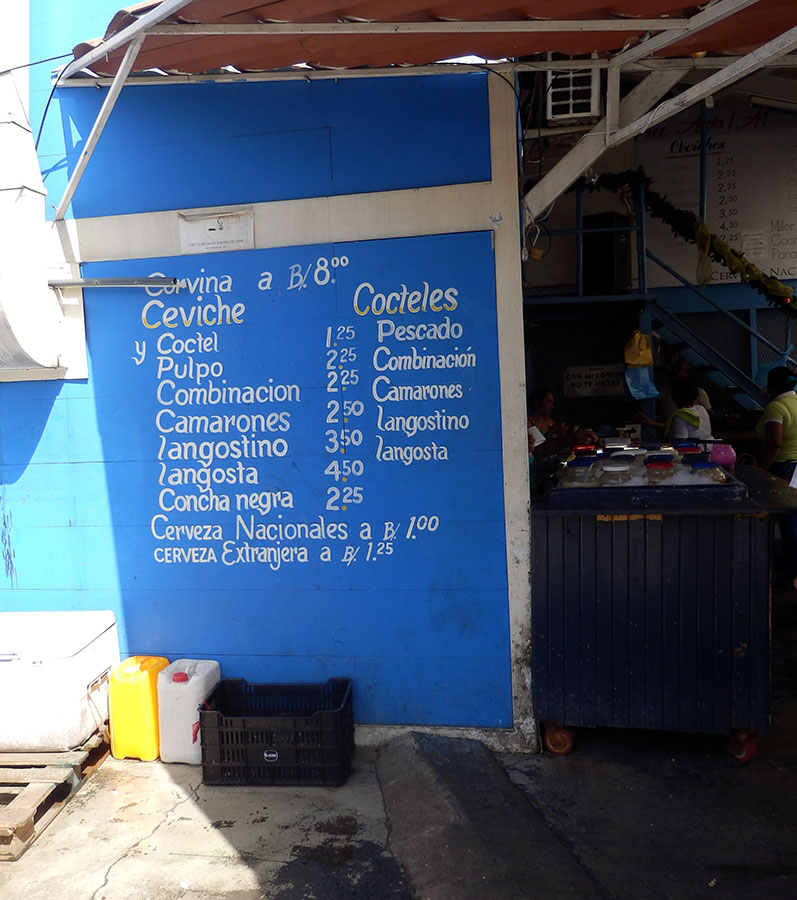
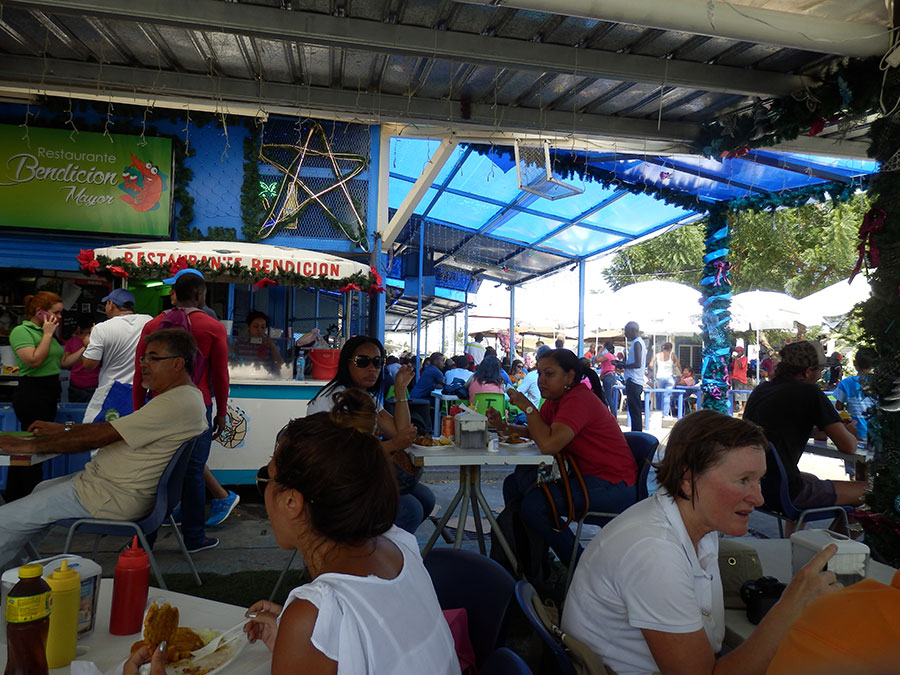
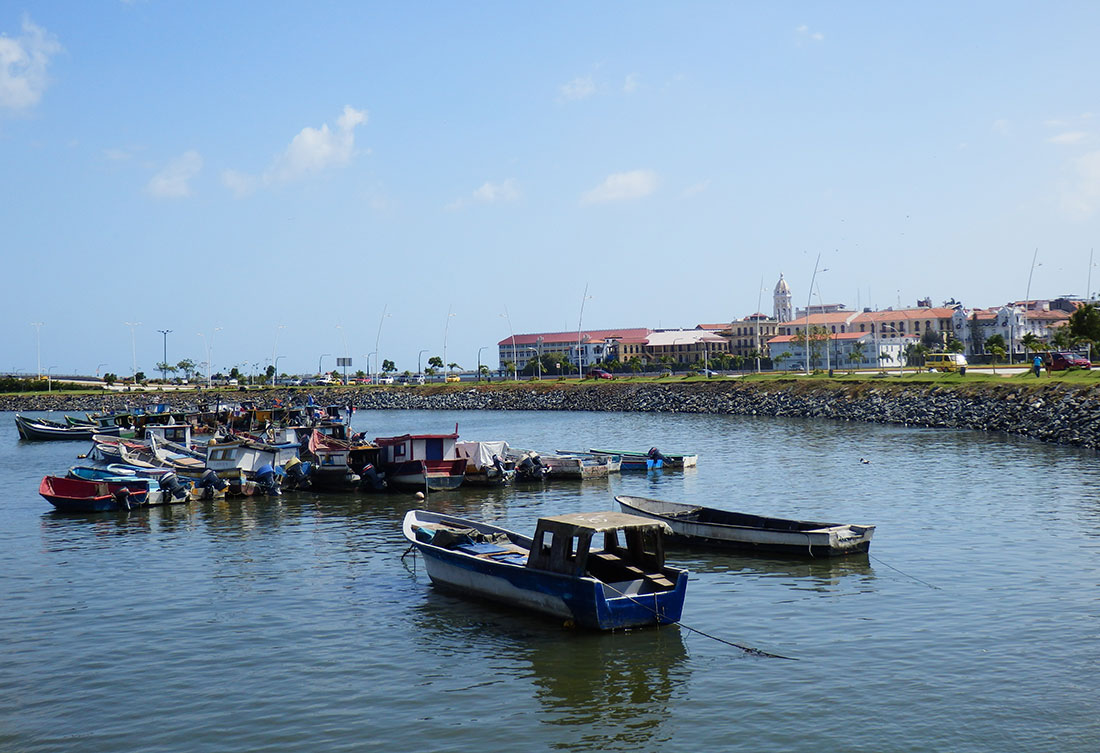
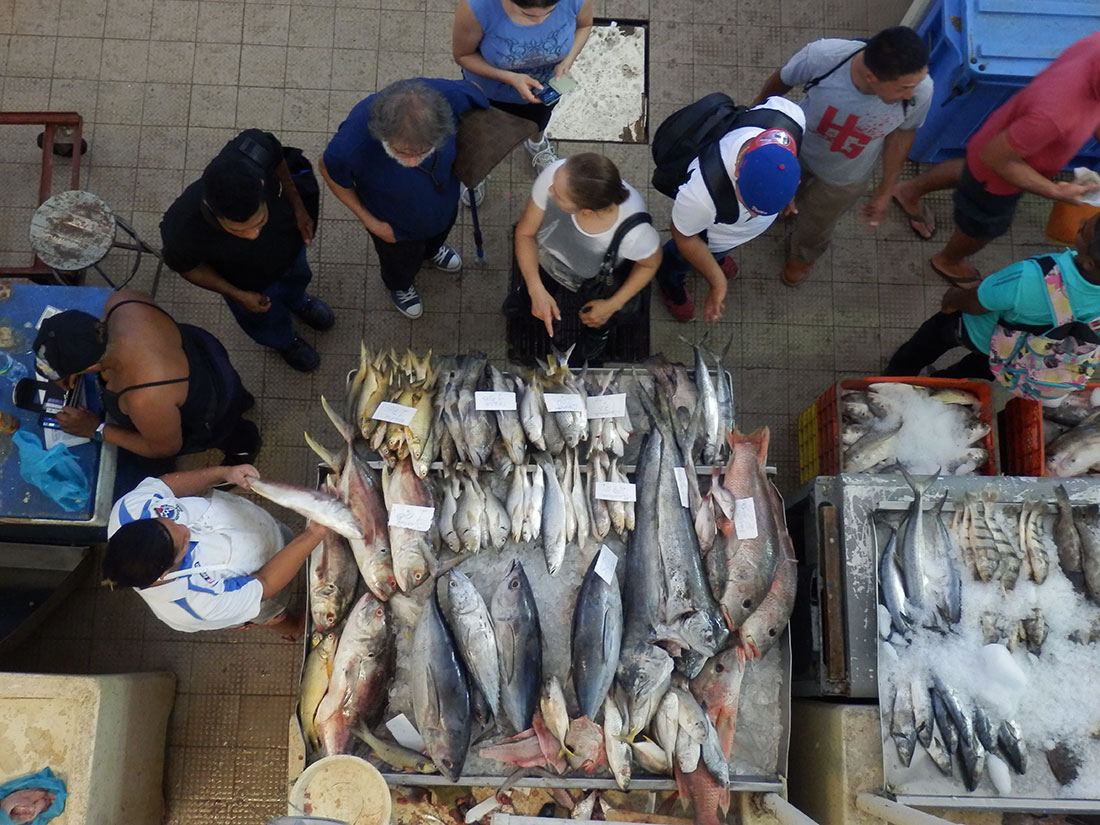
But not everything in the city is charming. Maybe the trash pickup behind the fish market was delayed due to the holiday, or maybe it’s normal to see and smell an enormous pile of rotting garbage on which vultures battle pelicans for the tastiest bits.
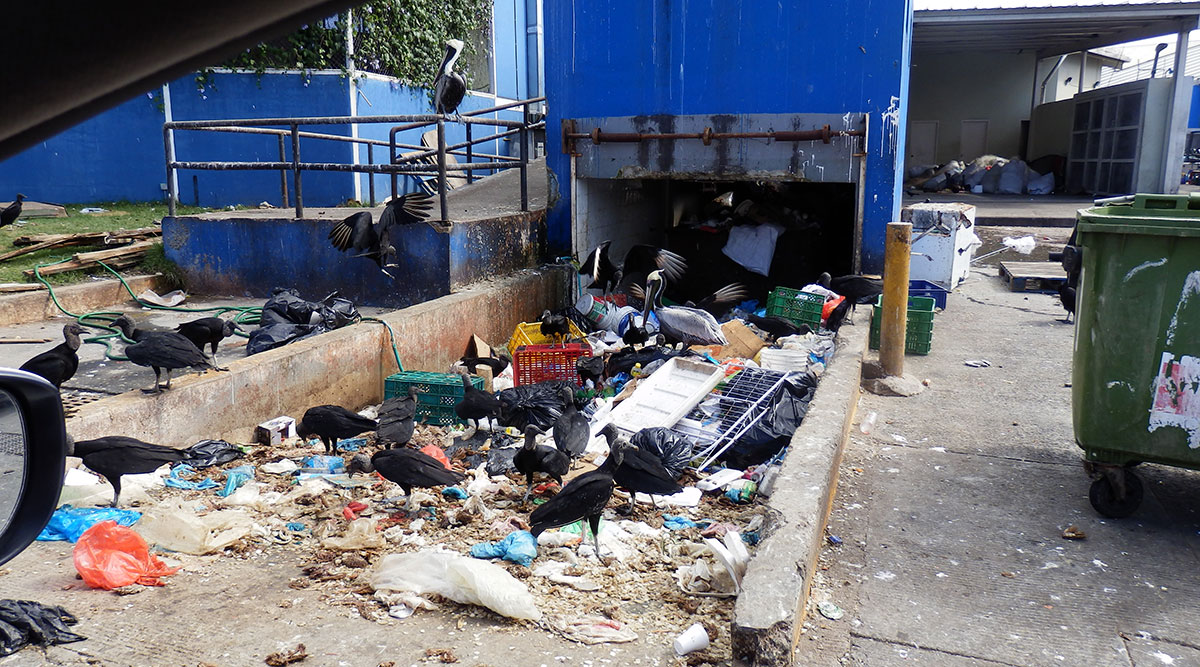
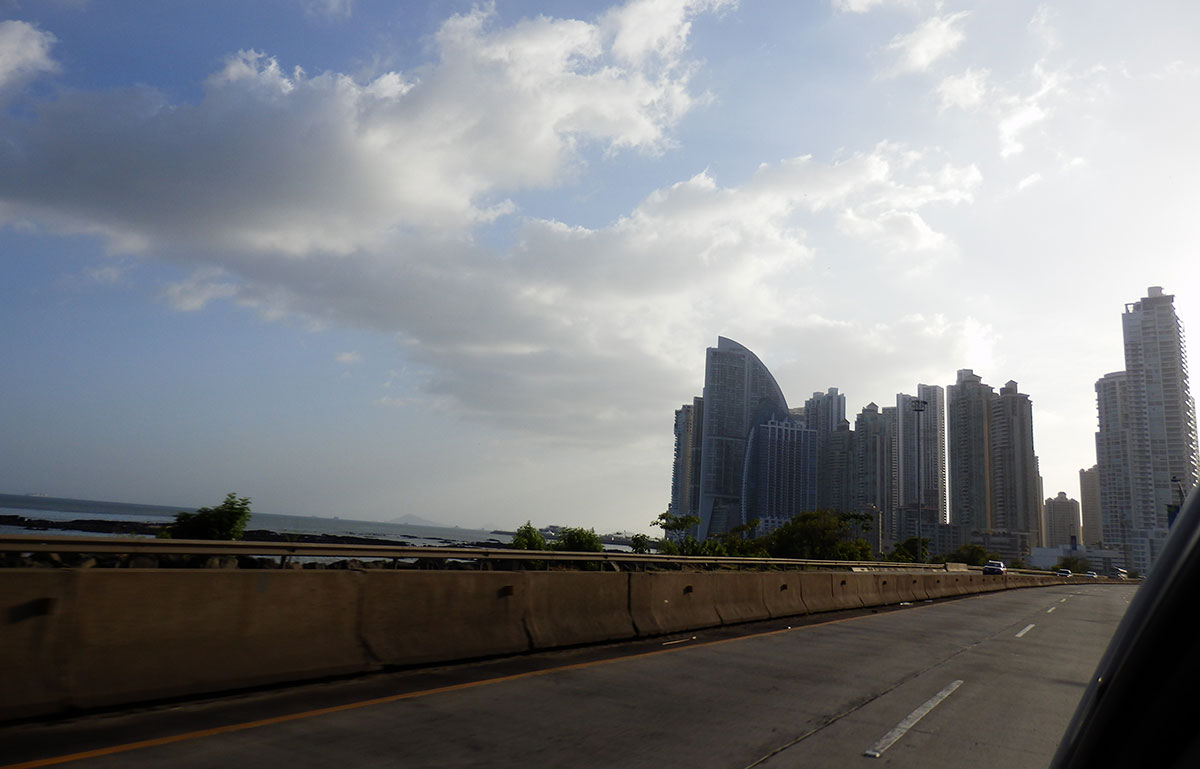
Sure, there’s the impressive skyline along the water’s edge with some of the world’s tallest buildings. But behind that wall of glittering glass towers are crumbling buildings that would be classified as slums almost anywhere on earth. One night in Casco Viejo we wandered one block too far north, stumbling into a neighborhood with no streetlights where people slept against dumpsters. Despite the wealth that Panamá has achieved, thanks to taking over the canal from the U.S., the lows are just as low as any other place in Central America.
I found the people of Panamá difficult to read. The adults seem outwardly reserved, though everywhere we went the kids smiled and waved. I slowed the car to get a picture of this mural, by famous street artist ROA, and these kids jumped out of the pool and ran up the sidewalk, laughing and waving the whole time.
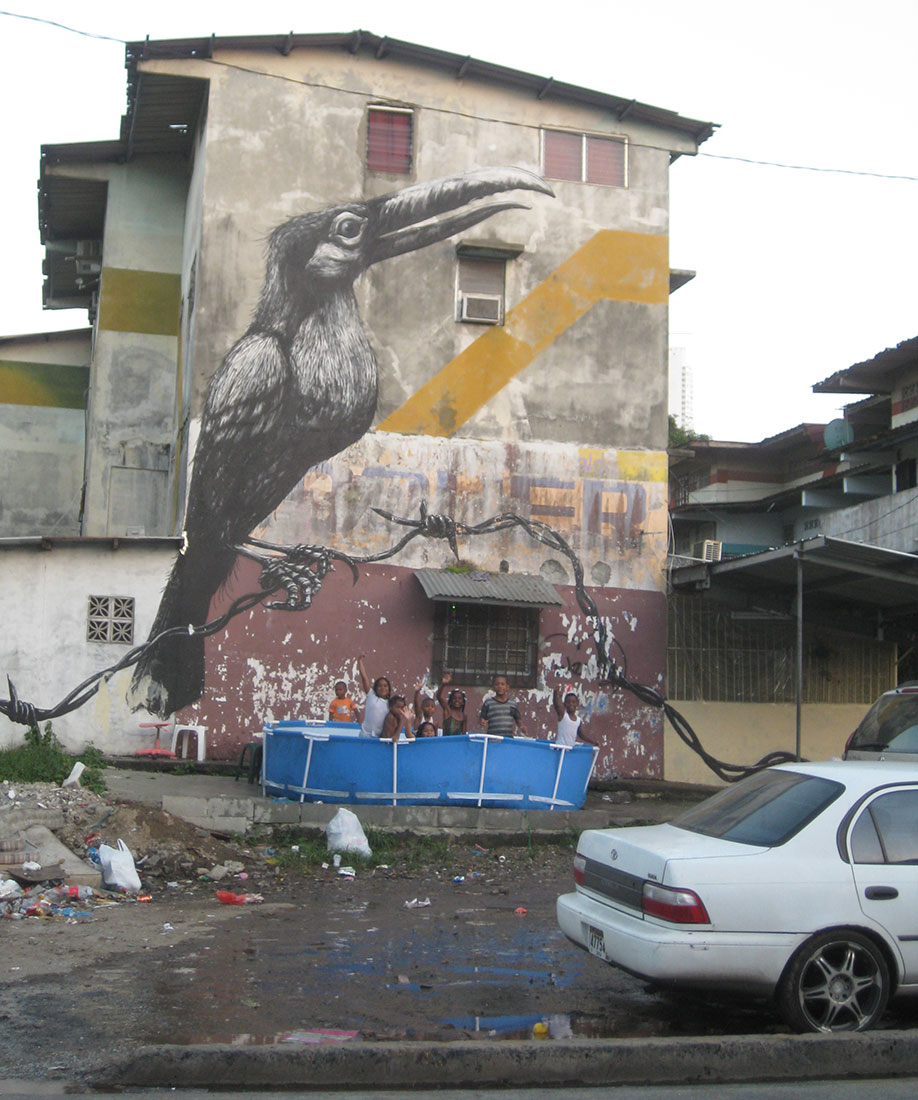
Which brings us back to Casco Viejo, and a short history lesson. The city was originally built to the east of what is now downtown, but a group of privateers led by Captain Morgan marched across the isthmus in 1671 to plunder the town. Someone put the torch to the place. Evidence is mounting that the mayor himself did it to keep the privateers from taking the place. The city was almost leveled as a result. After the raiders left, the Spanish decided the original location sucked. It was indefensible, as well as swampy and infested with mosquitoes. A new location was chosen a few miles west atop a low rise that could be fortified. That area is now called Casco Viejo, a collection of Spanish Colonial buildings dating back to the 1700s.
All good, right? Well, Panamanians haven’t gained any more respect for their historical structures than the mayor in 1671. When new buildings began to spring up in what is now downtown, anyone with class or money moved out of Casco Viejo. Neglected, the historic quarter began to decay. Rather than try to patch it up, the government was going to bulldoze a large portion of it to make way for a highway. Only after strong objections, and the area being designated a World Heritage site in 1997, did the government alter the route of the highway. Now, the highway goes out over the water, circumnavigating the neighborhood and blocking their view of the sea. It’s fucking stupid. Seriously, look at this shit.
The buildings in Casco Viejo that have been maintained or repaired, however – gorgeous.
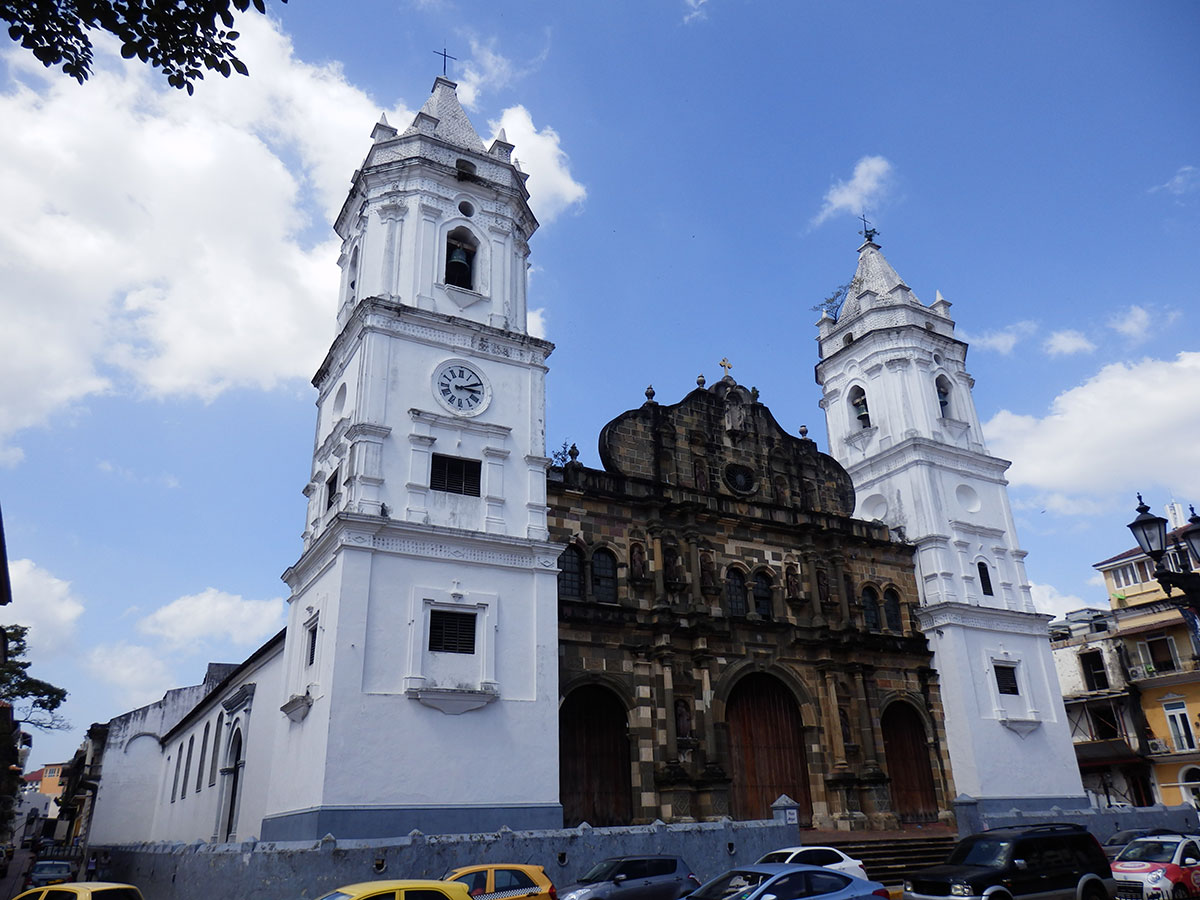
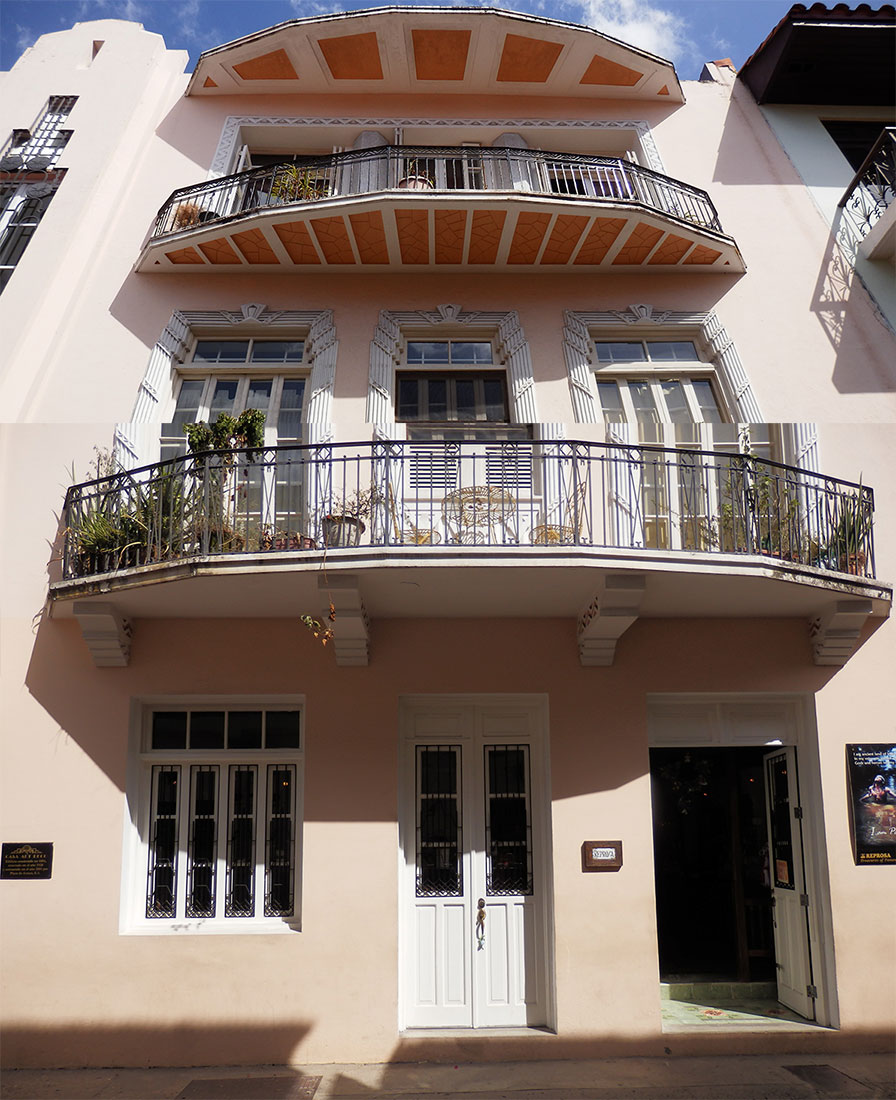
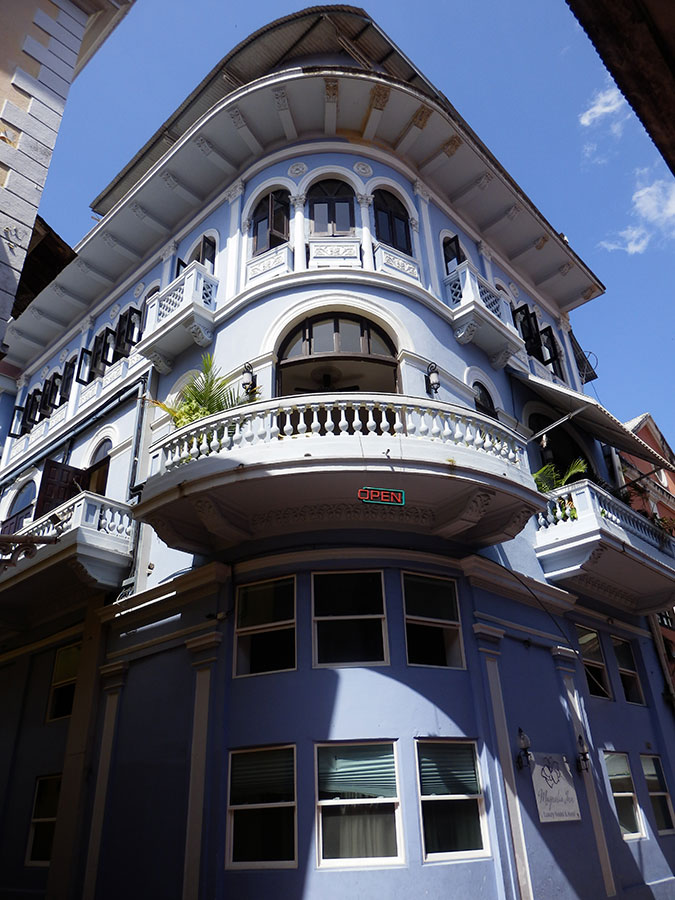
At a glance, only about 1/2 of the buildings in the neighborhood are occupied. Some of them appear beyond repair. Others are waiting for some moneyed expat to take over. Eventually, we’d get a look at real estate offerings in the area and decide we weren’t moneyed enough to retire to the neighborhood and set up a charming café and library. The area has become very hip. Construction and for sale signs are everywhere. Some of the families that still live in the area sit out on the sidewalks in front of buildings with roofs that are falling in, directly across from hip restaurants catering to only the wealthiest tourists and locals.
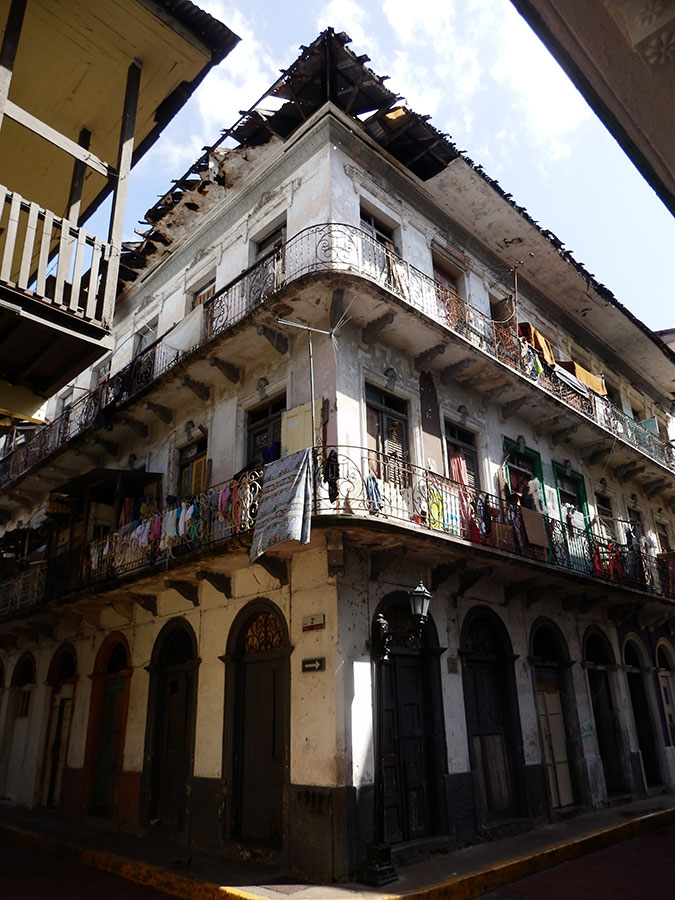
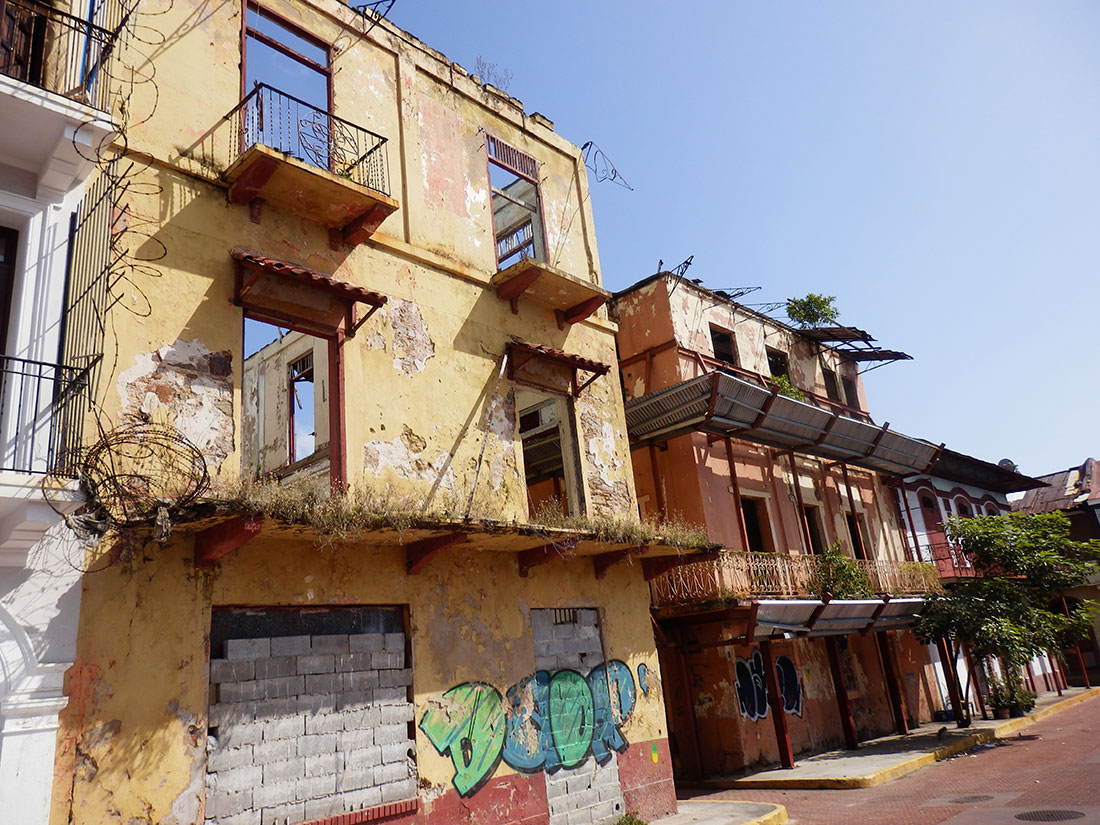
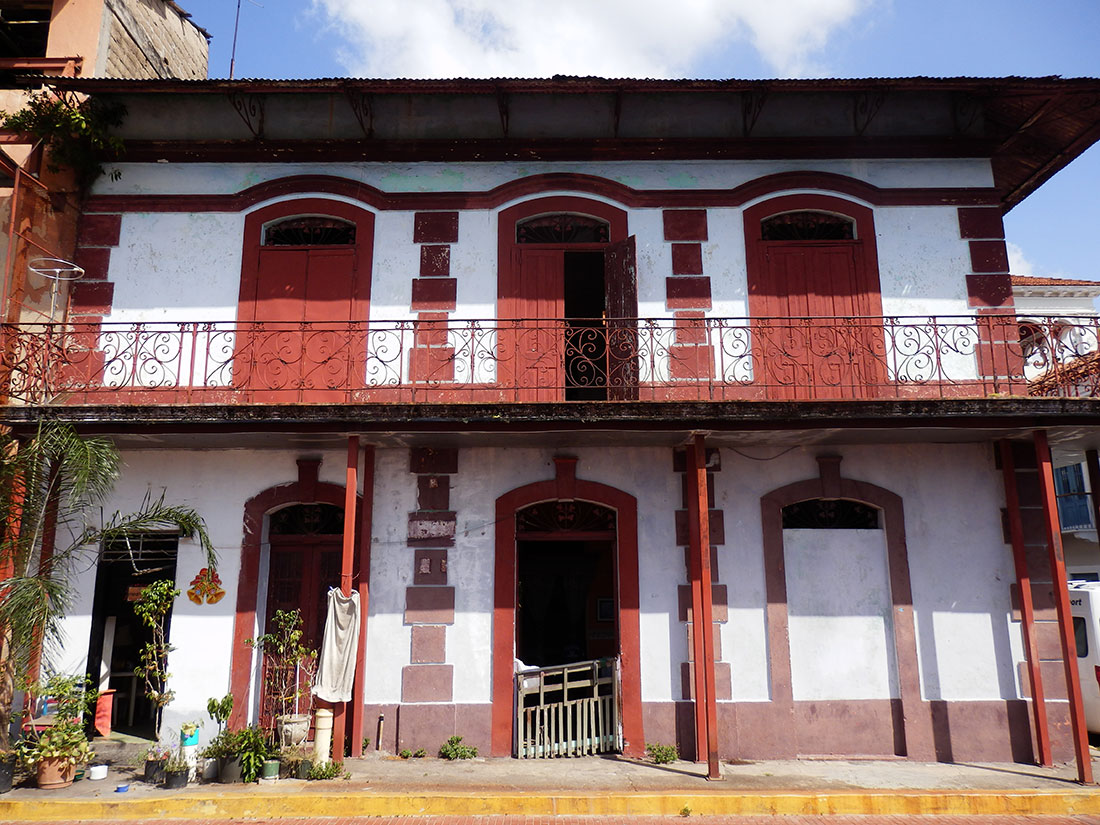
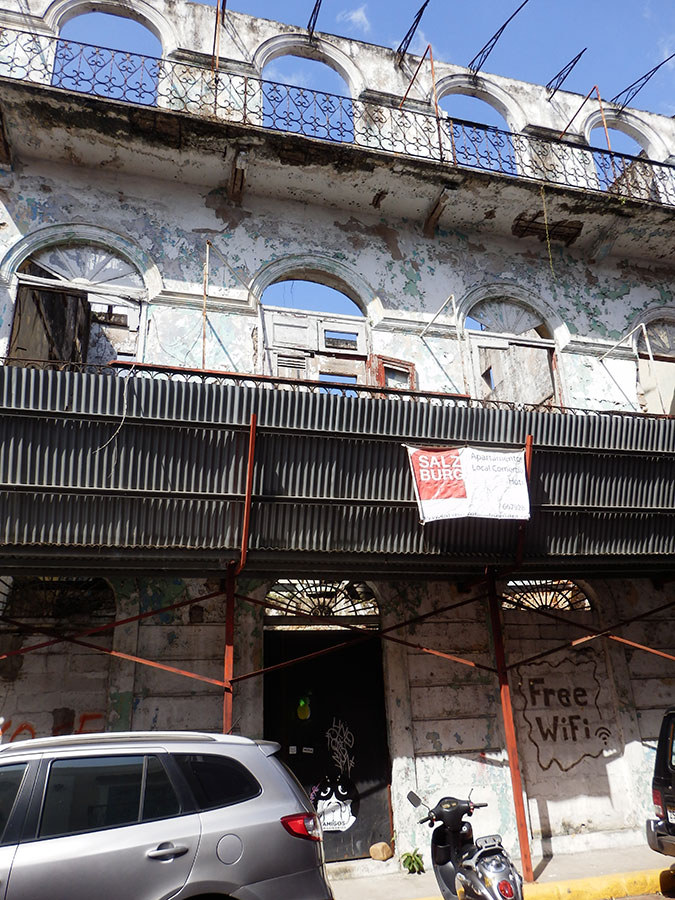 By the way, that “free wifi” spraypaint on the empty shell of a building? That’s not an ironic statement on the number of cafés in the neighborhood. There is free wifi all over the place in Panamá.
By the way, that “free wifi” spraypaint on the empty shell of a building? That’s not an ironic statement on the number of cafés in the neighborhood. There is free wifi all over the place in Panamá.
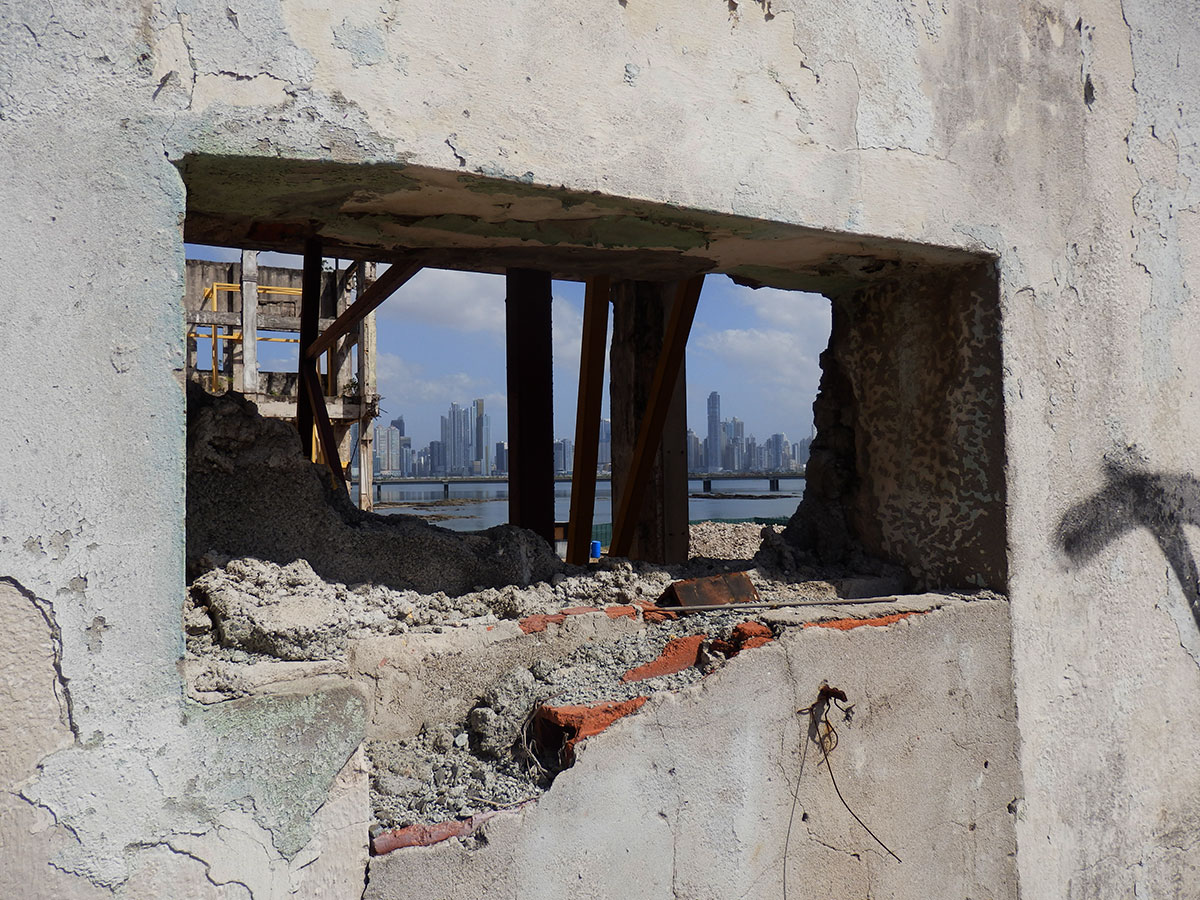
There is a small beach, of sorts, along one side of the neighborhood. When the tide is out, you’re looking at a stretch of mud and the aforementioned highway.
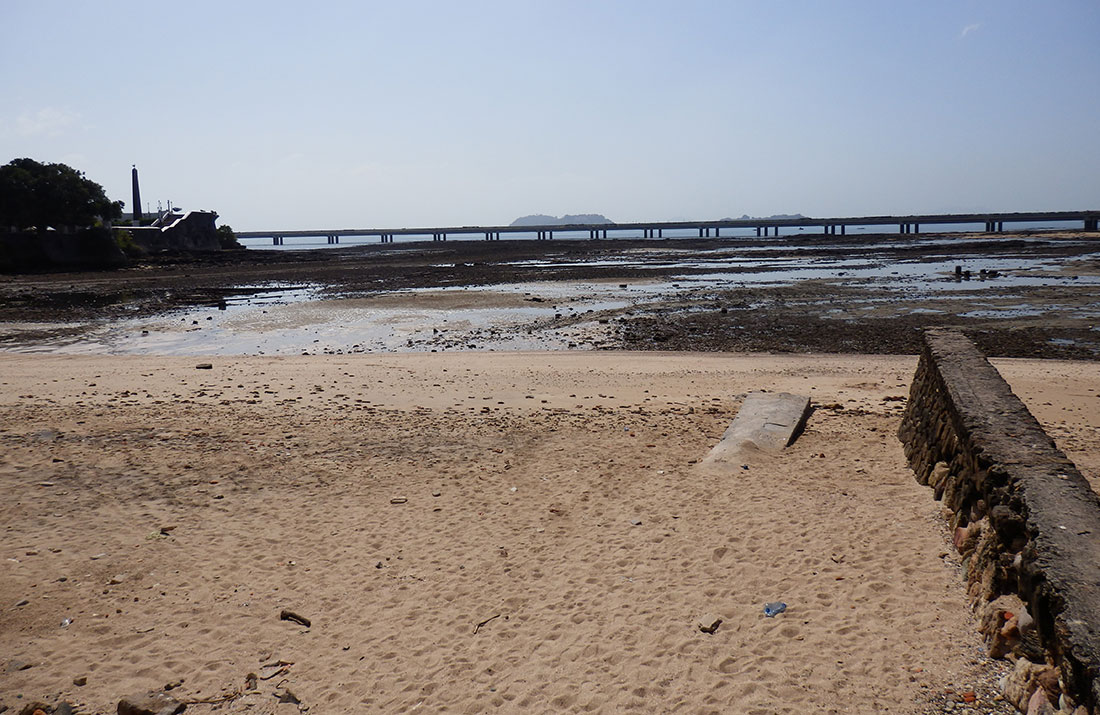
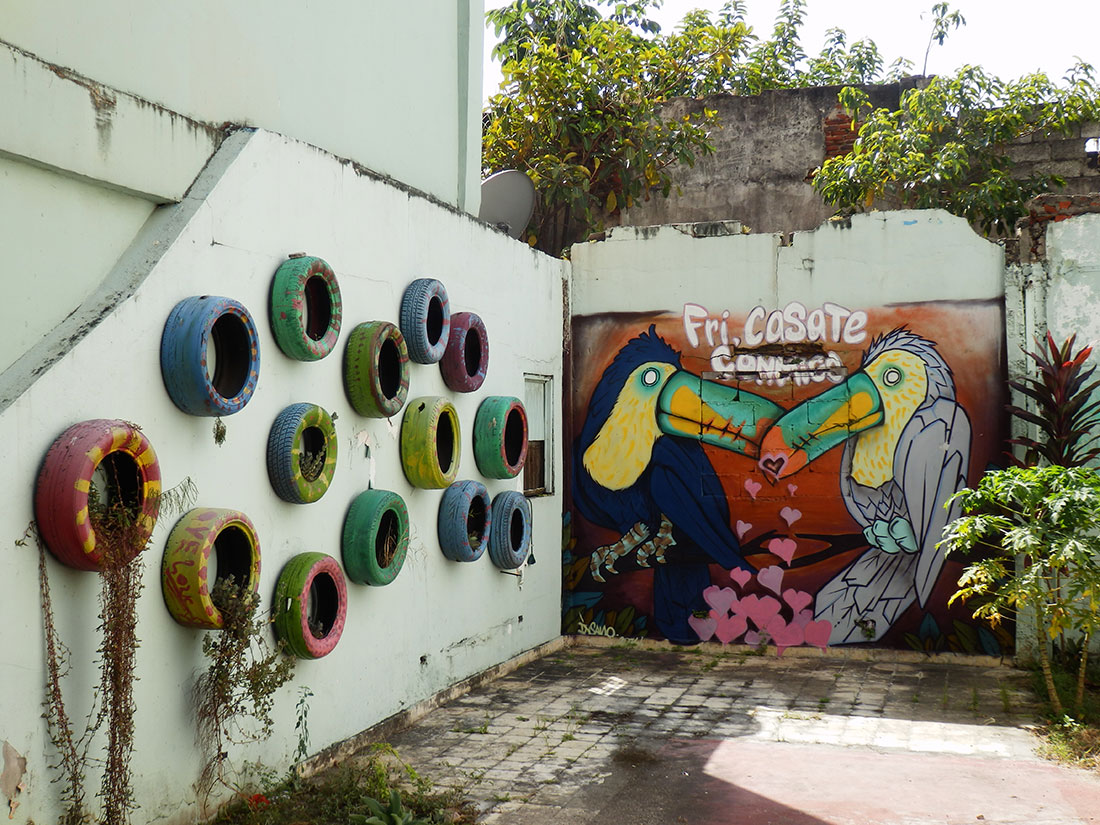
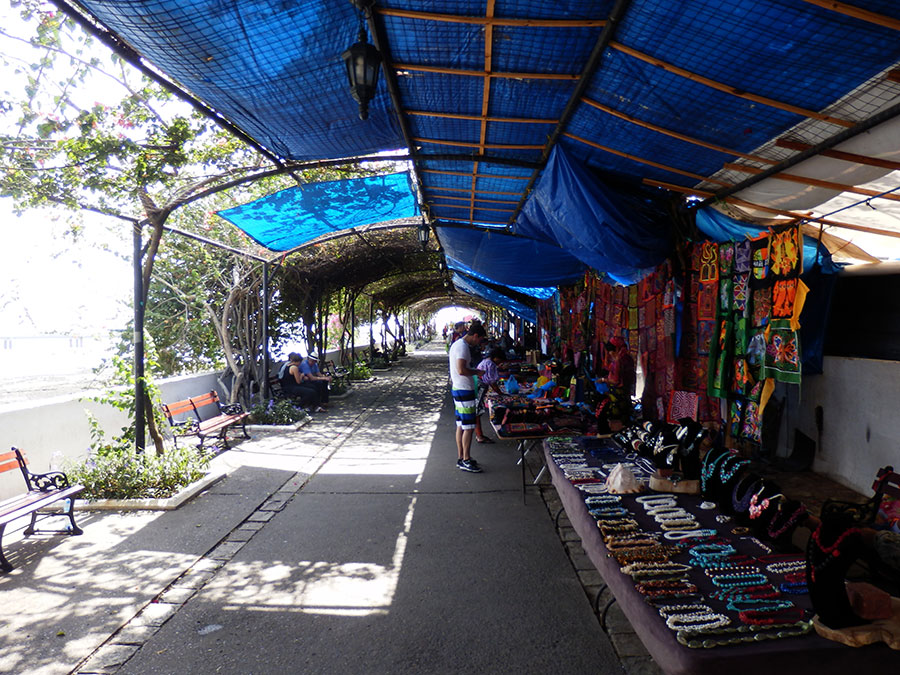
Not far from that beach is a small park on the tip of the peninsula. One leg of the park features a canopy, providing shade to vendors, some of whom sell handmade, traditional crafts. It also offers a somewhat impressive panoramic view (Note: you may want to zoom in.)
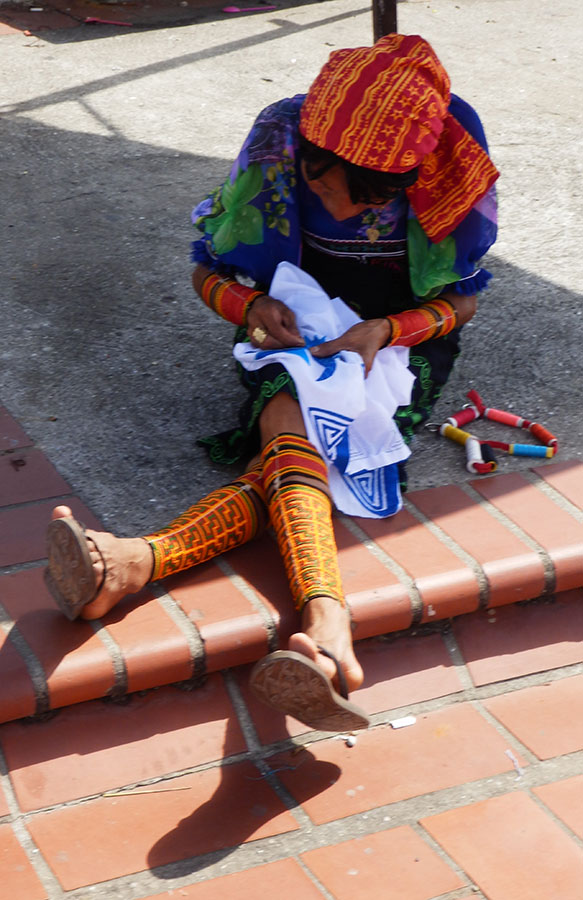 The natives that still occupy the Caribbean side of Panama, the Guna (or Kuna, or Cuna) sew interesting scenes into fabric, layering them by cutting away parts of the design. We picked up a few sheets of them for $10 each at this park (after paying more for them elsewhere.) You can spot these women from a mile away, thanks to their wonderful clothing. Those sheaths around her arms and calves are entirely beaded.
The natives that still occupy the Caribbean side of Panama, the Guna (or Kuna, or Cuna) sew interesting scenes into fabric, layering them by cutting away parts of the design. We picked up a few sheets of them for $10 each at this park (after paying more for them elsewhere.) You can spot these women from a mile away, thanks to their wonderful clothing. Those sheaths around her arms and calves are entirely beaded.
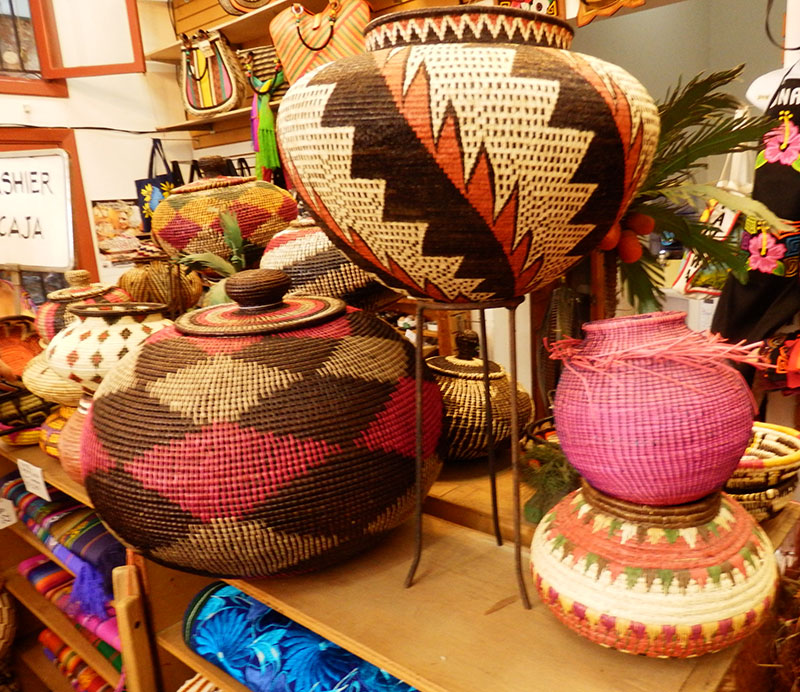
Another traditional craft you’ll see is baskets, some of which are woven so tightly that they can carry water. Seriously dense, sometimes with intricate designs, these things take up to a year to make. One of the larger ones pictured here was priced at $850, though I should note this was at a very touristy shop.
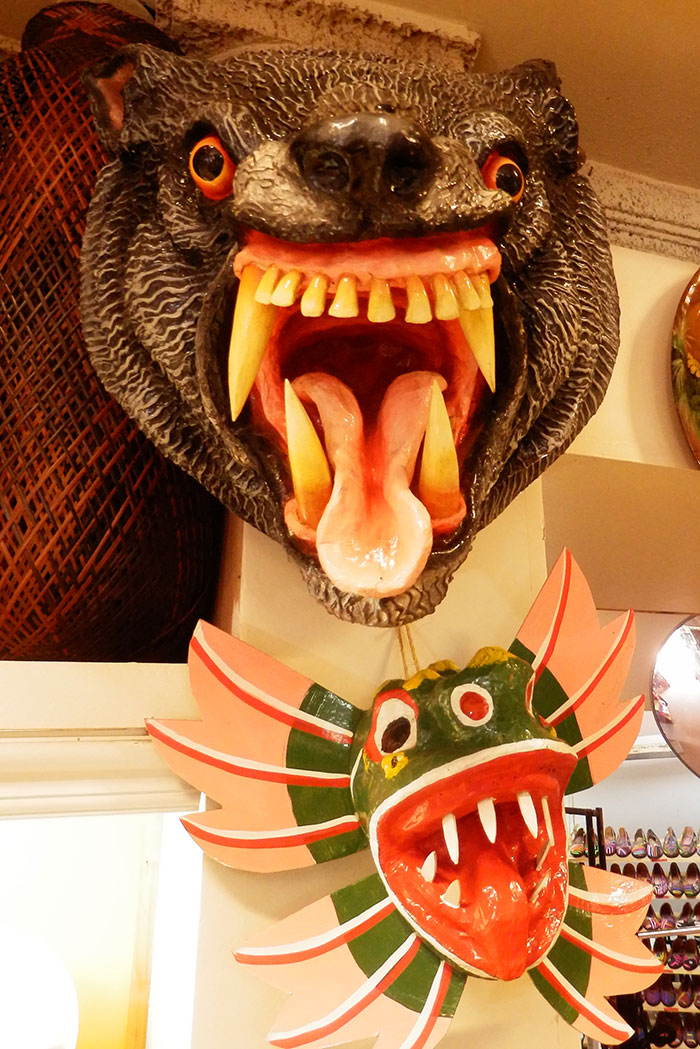 In another shop, we spied a collection of masks, some by Dario Lopez, the man we’d met a few days before, others clearly by different artists. The prices for arts and crafts and hats may be slightly higher at these shops than elsewhere, but even with the markup for tourists you’ll find bargains galore.
In another shop, we spied a collection of masks, some by Dario Lopez, the man we’d met a few days before, others clearly by different artists. The prices for arts and crafts and hats may be slightly higher at these shops than elsewhere, but even with the markup for tourists you’ll find bargains galore.
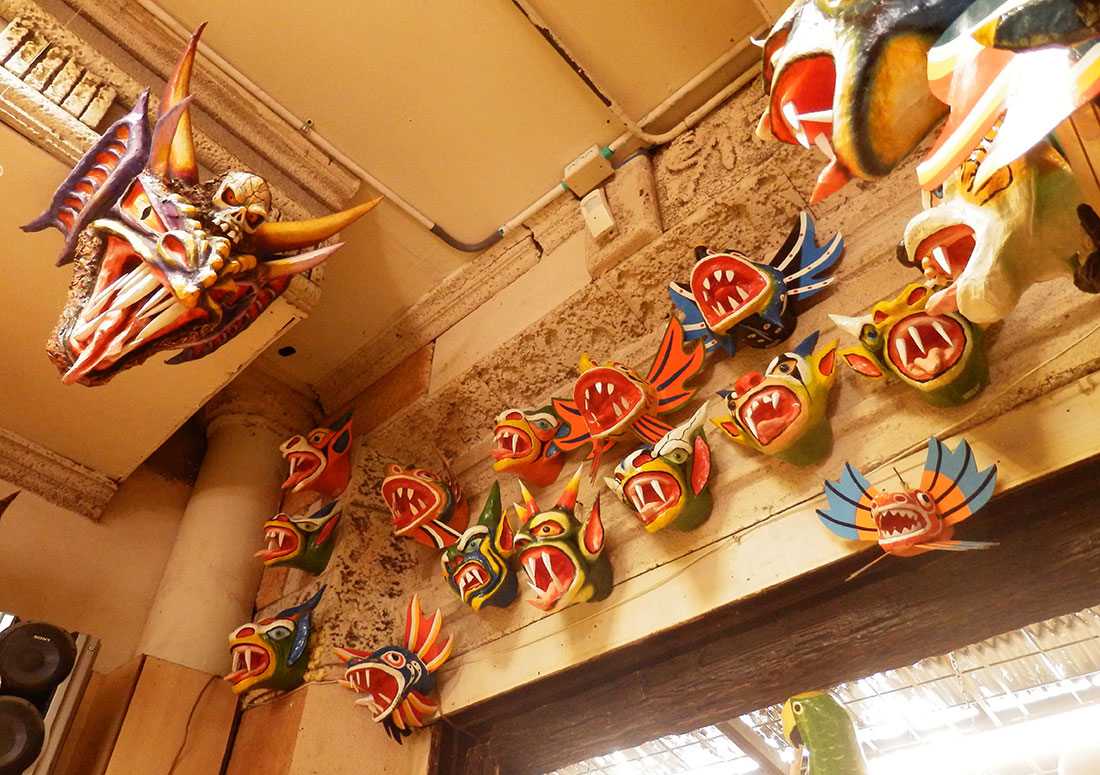
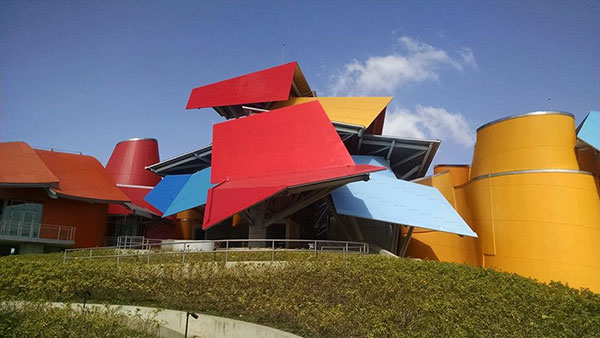 Near Casco Viejo is a narrow spit of land jutting out into the Pacific, the Amador Causeway, that is supposedly one of the hot spots for night life. We tried to drive out there one evening only to find the bumper-to-bumper traffic intolerable. A day or three later, tried again and reached the biodiversity museum designed by Frank Ghery, sort of a present to his Panamanian wife. The place is considerably smaller than it appears, since much of the structure is simply a roof over an atrium. The admission prices were considerably higher – I want to say $25 each – than for any other attraction we’d seen, so we gave it a pass. We continued to the end of the peninsula, passing the very popular TGIFridays and a variety of other cookie-cutter crap. The experience was made worse by what we can only hope is a temporary wall blocking off what is probably a fantastic view of the city on one side and the entry to the Panamá canal on the other.
Near Casco Viejo is a narrow spit of land jutting out into the Pacific, the Amador Causeway, that is supposedly one of the hot spots for night life. We tried to drive out there one evening only to find the bumper-to-bumper traffic intolerable. A day or three later, tried again and reached the biodiversity museum designed by Frank Ghery, sort of a present to his Panamanian wife. The place is considerably smaller than it appears, since much of the structure is simply a roof over an atrium. The admission prices were considerably higher – I want to say $25 each – than for any other attraction we’d seen, so we gave it a pass. We continued to the end of the peninsula, passing the very popular TGIFridays and a variety of other cookie-cutter crap. The experience was made worse by what we can only hope is a temporary wall blocking off what is probably a fantastic view of the city on one side and the entry to the Panamá canal on the other.
For what we thought would be our last meal in town, we returned to Casco Viejo to a place that does a rather expensive prix fixe menu that was delicious. The food came in small courses, starting with bone marrow and continuing through dishes both traditional and experimental. Seriously good stuff, and way too much of it. I couldn’t even waddle into the gourmet ice cream parlor just down the block.
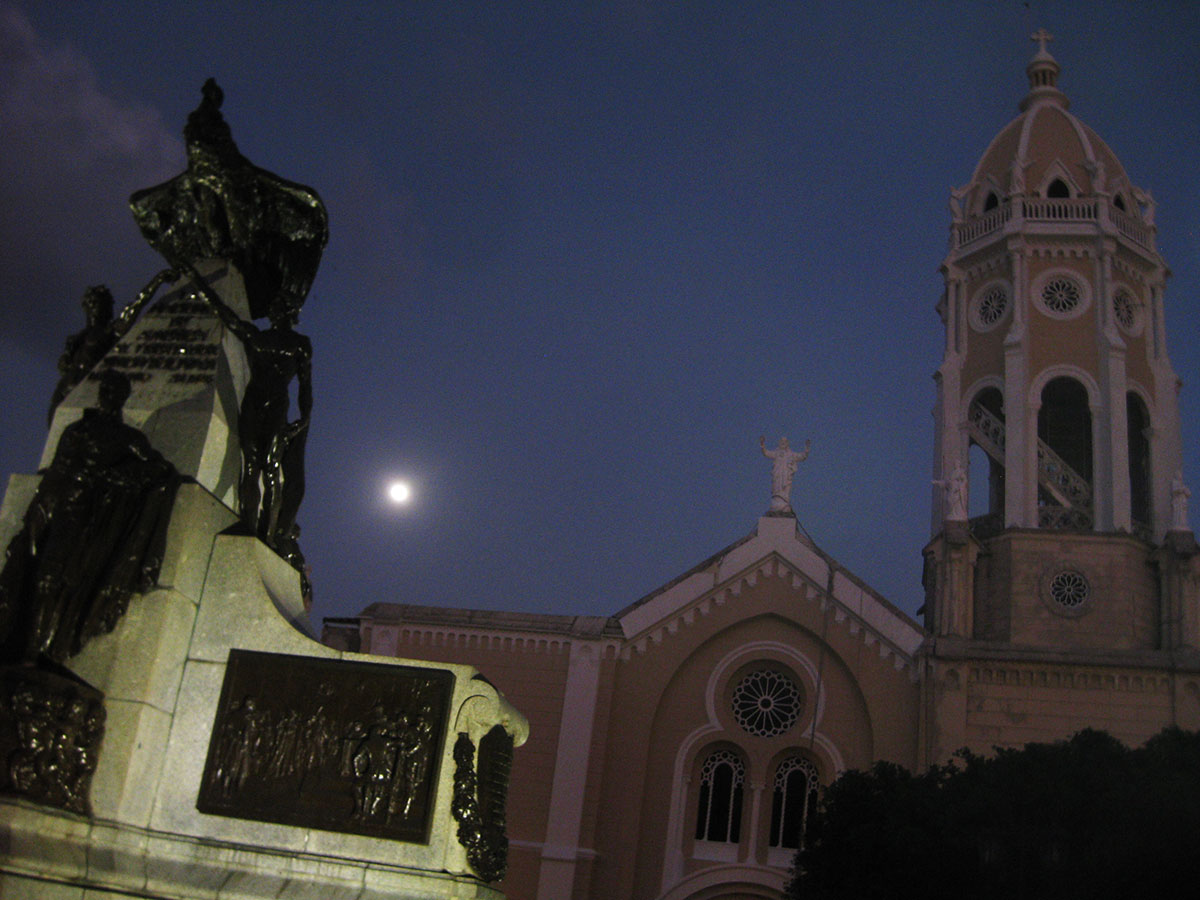
In the morning, we returned the rental car (I wish I’d looked at how many miles we’d put on it) and got in line for our flight. As happened in Nicaragua last year, the weekend after New Years was overbooked and we were offered fat travel vouchers, a free hotel room and food. I emailed work and told them I’d be a day or more late and we caught a cab to the hotel the airline provided, another high rise with rooftop pool, this time on the east end of town.
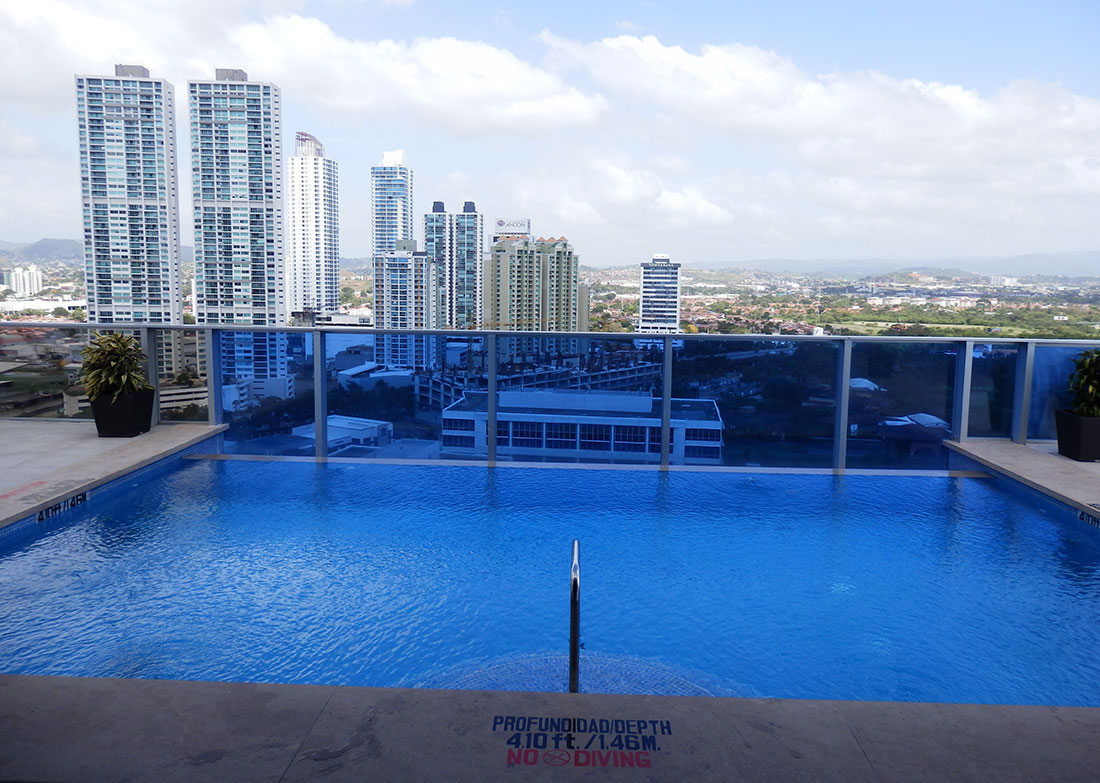
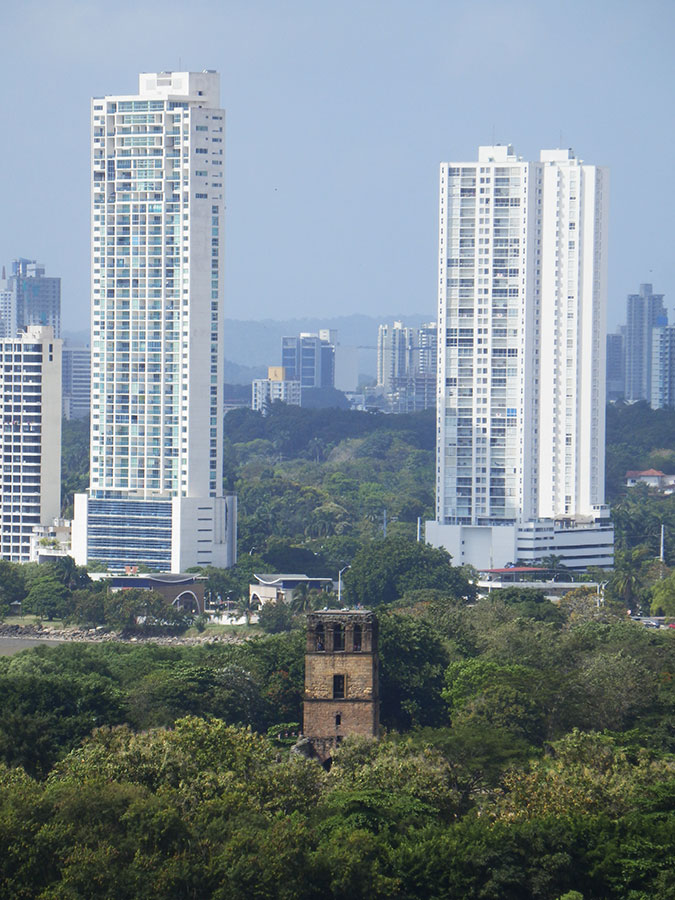 Remember that little history lesson above? The city of Panamá grew so much that they eventually began to encroach on the site where the town had been founded. The ruins lay pretty much ignored for about 300 years. Archaeologists were brought in to study the place and now a big portion of it is a park. On the edge of the park is a museum featuring both Native American artifacts and items from the Spanish Colonial period. Overall, I’d rate the whole experience, both museum and park, as “just okay.” There isn’t much left of the ruins, and the museum is small with displays mostly in Spanish. As a recovering pirate addict, the most interesting thing was the model of how the town looked before being burned. The section dedicated to the sacking itself was a bit of a let-down.
Remember that little history lesson above? The city of Panamá grew so much that they eventually began to encroach on the site where the town had been founded. The ruins lay pretty much ignored for about 300 years. Archaeologists were brought in to study the place and now a big portion of it is a park. On the edge of the park is a museum featuring both Native American artifacts and items from the Spanish Colonial period. Overall, I’d rate the whole experience, both museum and park, as “just okay.” There isn’t much left of the ruins, and the museum is small with displays mostly in Spanish. As a recovering pirate addict, the most interesting thing was the model of how the town looked before being burned. The section dedicated to the sacking itself was a bit of a let-down.
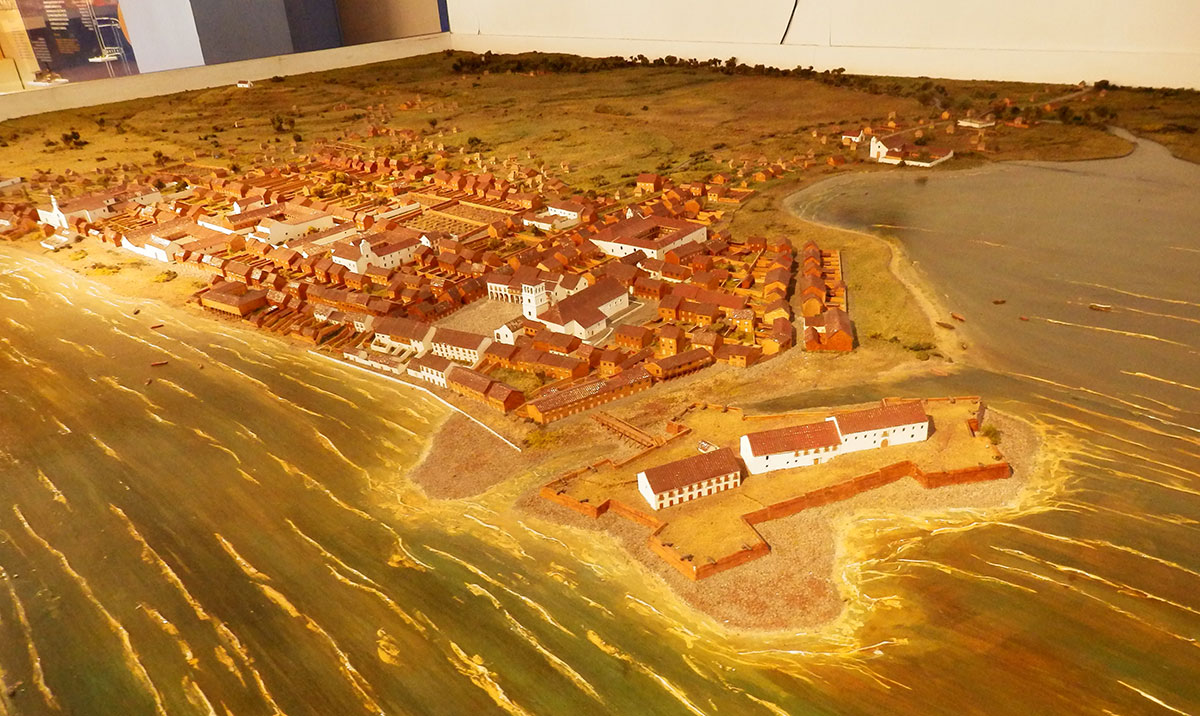
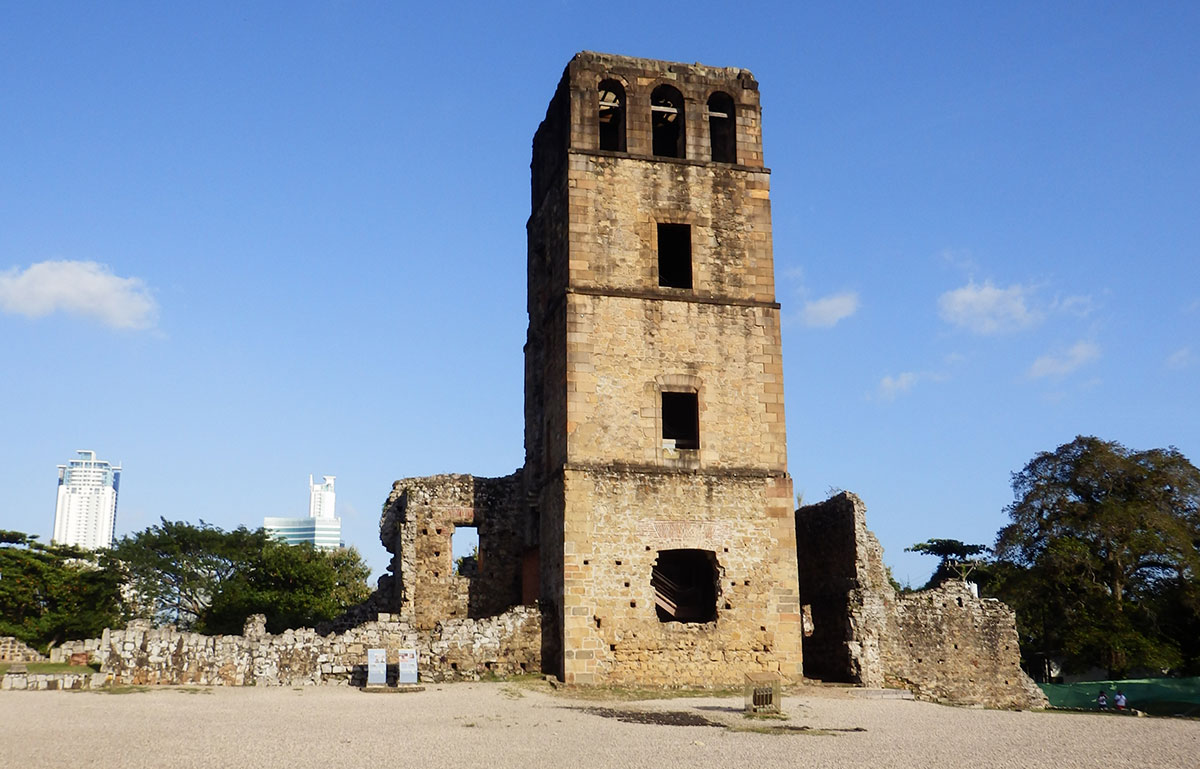
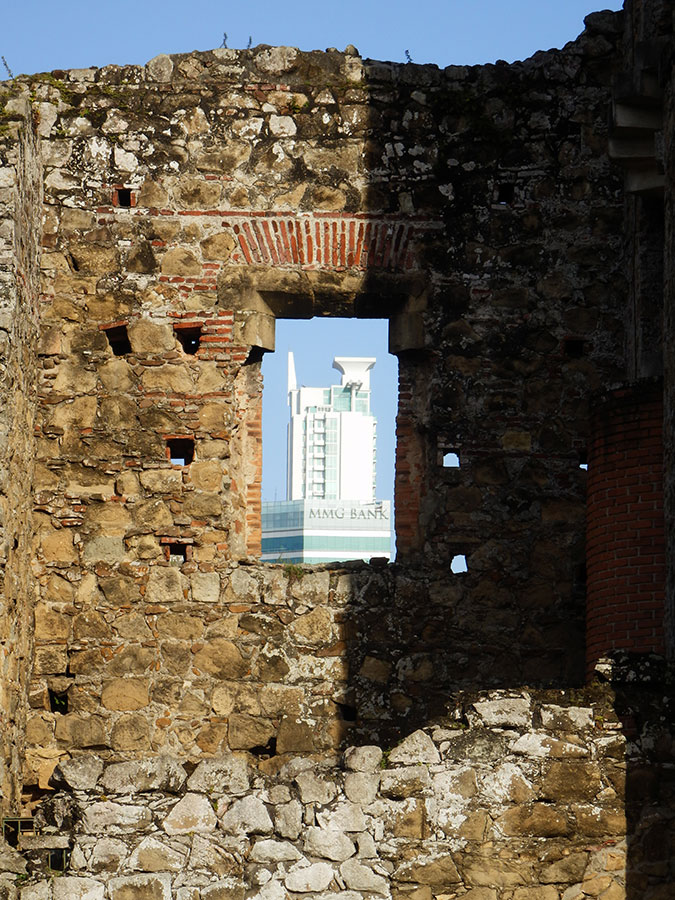
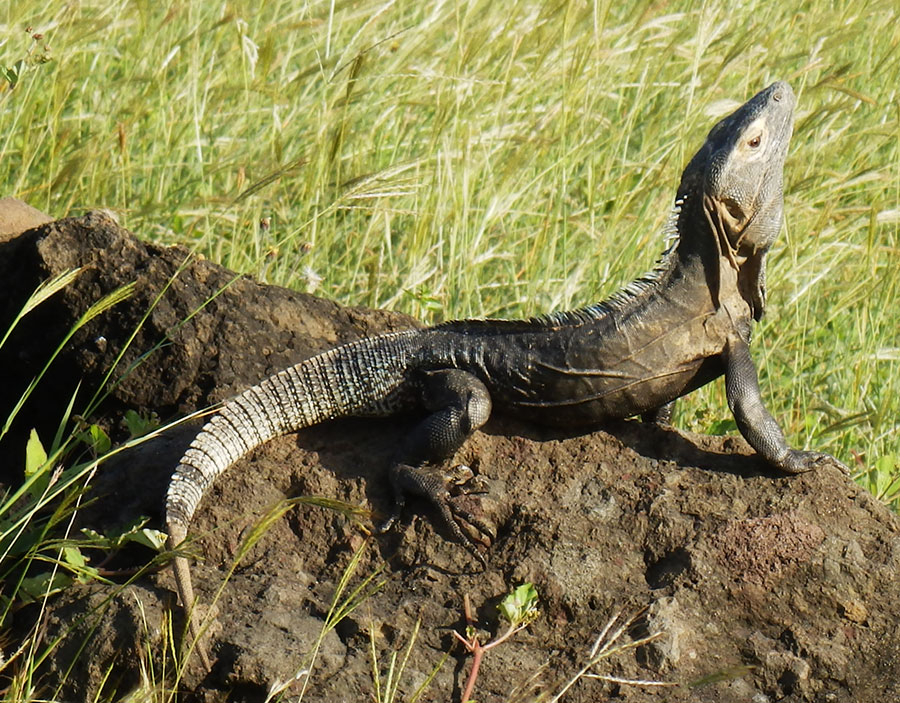
Though the iguanas were clearly enjoying the sun, the heat drove us back to the hotel where we lounged by the rooftop pool, watching the sun set over the city and ruins on one side, the moon rise over the suburbs on the other, and the ever-present vultures gliding overhead.
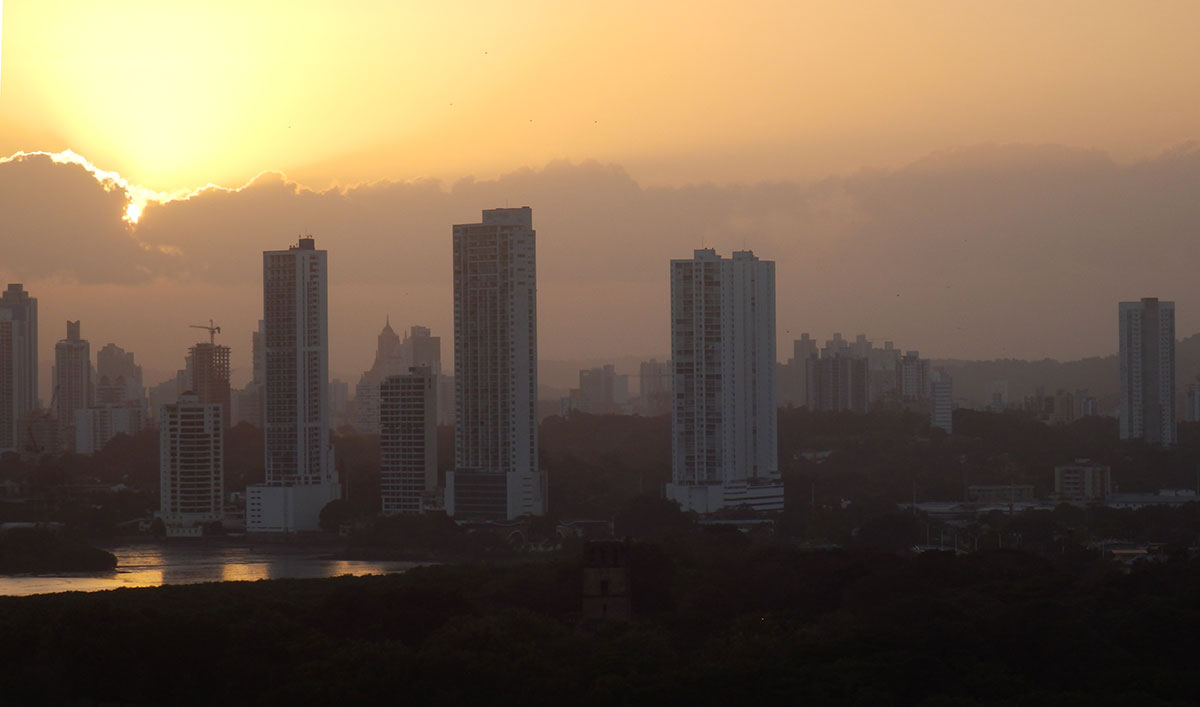
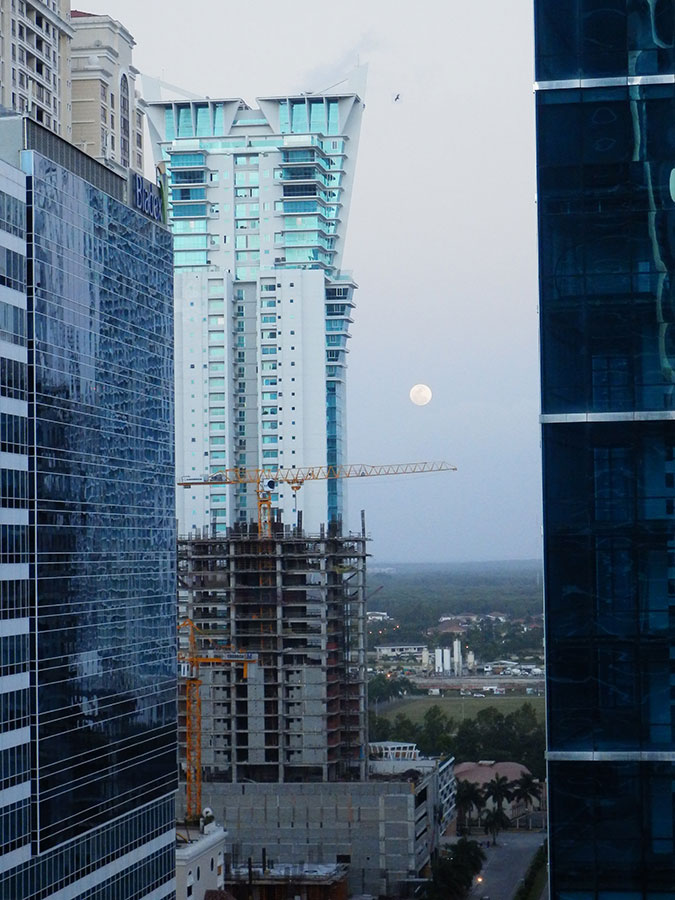 In the morning, Delta flirted with bumping us again but then got us seats regardless of what we wanted.
In the morning, Delta flirted with bumping us again but then got us seats regardless of what we wanted.
Next episode: the Panamá Canal and a quick zip through other parts north.